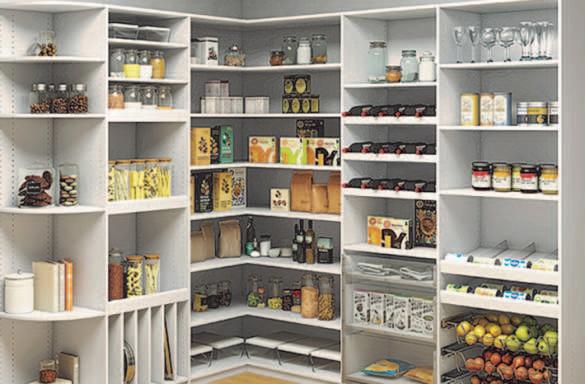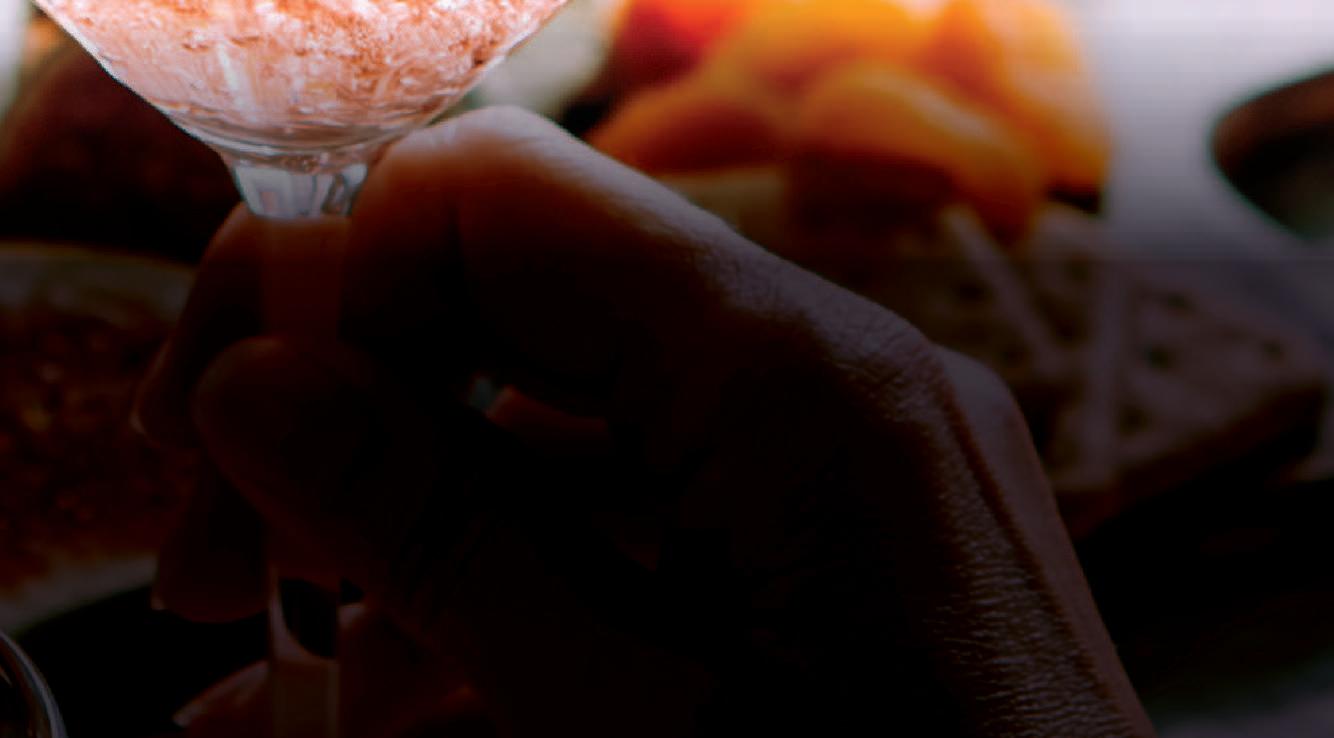










































































PRESENTED BY













































































PRESENTED BY


Largely madefrom chickpeas(also knownas garbanzo beans),hummus isan excellentalternative to heavy,calorie-laden dips. Chickpeasare highin fiber,whichmeansthey’re fillingand a friend to the digestivesystem,plus they’re cholesterol-freeand won’t spike bloodsugar. Better yet,makinghummus athome requiresjust afew ingredients,soyou can tailor the recipe to includespices likecayenneorchilepowder for a littleheat,orleaninto fallwith aroasted carrotor pumpkinhummus.

Kalechips havea similar crunchandappeal to potato chips, butwithmore nutrients and fewer calories These dark greenleavesare packedwithvitaminsas wellasfiber.Forthebest homemade kalechips, opt forcurlykalethat’s been thoroughlywashedanddried withstems removed. Toss with a bitofolive oiland salt beforebaking forabout20 minutes.

Take advantage ofthe waningdays ofsummer —whenmany fruits are attheirjuicy best and makesweet, hydrating popsicles They present theperfectopportunityto “eatthe rainbow.”You can use blueberries,whicharea good source ofantioxidants; bright redstrawberries, whicharepackedwith vitaminC;orkiwi, which bringsa slate ofvitaminsas wellaspotassium.

Grabbing ascoopor two of ice creamfromthefreezer can easily lead toconsuming more thanintended. Satisfy thatcraving by opting for Greekor Icelandic yogurt instead, which canstill be very flavorfulbutwith fewer calories overall.Its livebacterialcultures can also helppromotegood guthealth, whichinturn may helpprovide a boost tooverallhealth.Plain, unsweetened yogurtisthe bestchoice. Mixinberriesor a bitofhoneytosateasweet toothoruse Greek yogurtas the basefor a zippy diplike tzatziki.
Wereachforsnacksforallkindsof reasons—forthetaste,outofboredom, tobridgethegapbetweenmeals.The averageAmericaneatsbetweenone andthreesnackseveryday,butthat’s notnecessarilyabadthing.“While snackingcansometimeshaveabad reputation—bringingupimagesof foodshighincalories,sugar,saltand processedmeat—itcancertainly bepartofanoverallhealthydiet,” saidHankDart,M.S.,Washington Universitypublichealthexpertat SitemanCancerCenter.“Optionslike low-saltnuts,slicedvegetables,fresh orfrozen—notinsyrup—fruit,100% whole-grain crackers andplain Greek yogurt.Combinationsnackscanbe particularlysatisfying:mixingfruit like berrieswithplainyogurt,orwholegraincrackersorbreadwithhummusor peanutbutter.”
Makingsnacksathomeisalmost
alwaysahealthierchoicethanturning tovendingmachinesorprepackaged goods.Itallowsyoutobemoreaware ofportionsize,andyoucaneasily adjustingredientstocatertoyour family’sfavorite flavors.Likespice? Addanextrajalapeñotothatmango salsa.Prefersomethingsavory?Roast somechickpeaswithpaprikaand garlicpowder.“Athome,trytomake itsimplerforyouandyourfamilyto choosebetteroptions,”Dartsaid. “Stockuponhealthysnacksandkeep theminplacesthatmakethemeasyto seeandgrab,suchascut-upcucumber onthetopshelfofthefridge,or orangesandwhole-graincrackersina basketonthecounter.”
Snackingcanbeamindful,deliberate choicethatleadstoeatingawider varietyoffoodsandenjoyingthe vitamins,minerals andothernutrients theycanbring.“Wedon’tneedtogive


HANK DART, M.S.
WashingtonUniversitypublichealth expertatSitemanCancerCenter PHOTOPROVIDEDBYSITEMANCANCERCENTER
uptheless-healthysnacksthatwelove, butcuttingbackonthemandreplacing themwithhealthieroptionscangivea realboosttothequalityofourdietsand ouroverall health andwellness,”Dart said.“Itcantakesometimeandabitof efforttomakethatswitch,butit’swell worthit.Happysnacking.”
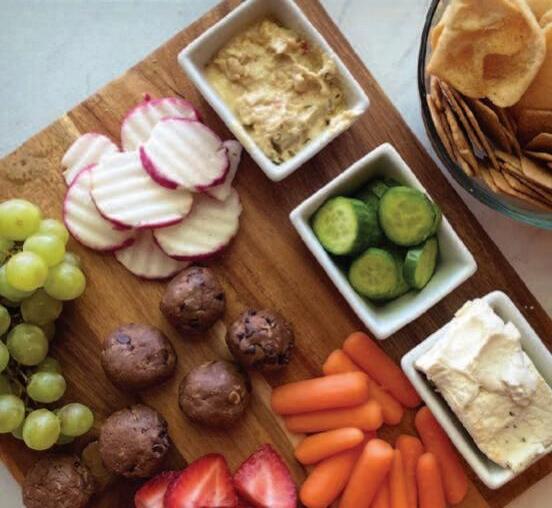

Creating a summer snackplate is a fun way to flexyourcreative muscles.Here is a basicblueprint for a plate thatis sweet, crunchy,refreshingand satisfying. Addasmuch oraslittleas youneed to feed yourselfor a crowd.
INGREDIENTS
2 or 3 fruits (suchas strawberries, grapes)
2 or 3 vegetables (such as carrots, cucumbers, radishes allaregood dippers)
2 dips or cheeses (such ashummusor garlic andchivesoftcheese)
Pita chips andchoice of crackers
Chocolate chip proteinbites (see recipebelow)
PROTEINBITES
(makes12 to 15pieces)
½ cup nutbutter
½ cup oats
½ cup chocolate proteinpowder (may also usevanilla)
3to4 Tbsp milk
1 Tbsp honey
1tsp vanilla
½tsp cinnamon
2 Tbsp minichocolate chips
PREPARATION
Mixnutbutter,oats, proteinpowderand 2Tbspmilkina mediumbowluntilwell combined.Stirinhoney, vanillaandcinnamon. Doughshouldbesoft enoughtorollinto ballsbutnotsticky. Addremainingmilk 1Tbspatatimeiftoo dry.Mixinchocolate chips.Rollintoballs. Enjoyimmediatelyor refrigerate.


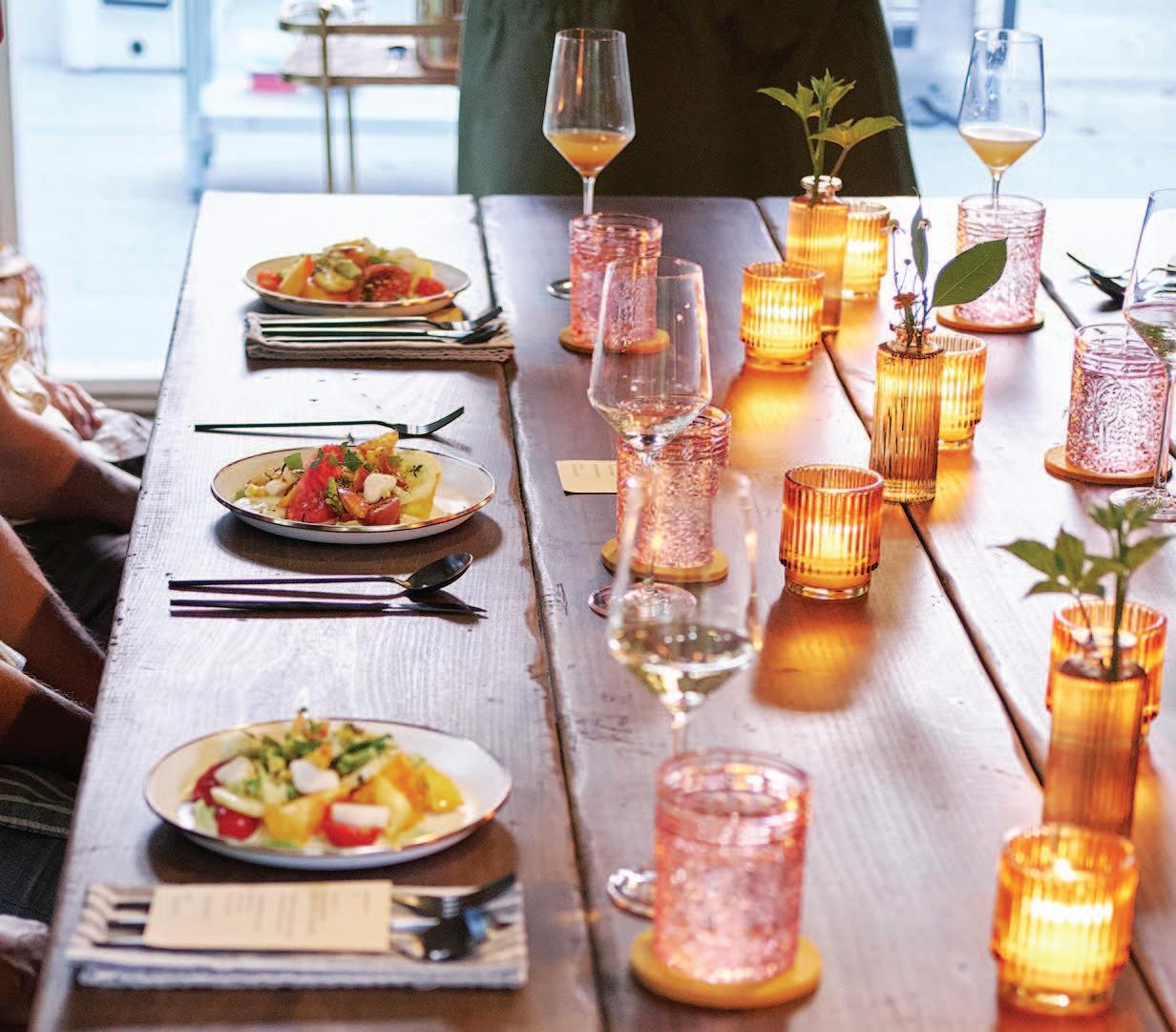












Inspired Local Food Culture | St. Louis
Visit our website to stay connected to food and drink news, explore neighborhood guides and find simple yet stunning recipes. While you’re there, make sure to look for the expanded stories from this quarterly issue. As you flip through these pages, scan the QR codes with your phone camera to read more on our website.


SIGN UP FOR OUR NEWSLETTERS feastmagazine.com/newsletters

TRY EASY & ELEVATED RECIPES feastmagazine.com/recipes
PUBLISHER Ian Caso Fall �������� | Volume ���� | Issue3
Editorial
MANAGING EDITOR
Shannon Weber, sweber@feastmagazine.com
ASSOCIATE EDITOR
Emily Standlee, estandlee@feastmagazine.com
ASSOCIATE EDITOR
Daniel Puma, dpuma@feastmagazine.com
CONTRIBUTING WRITERS
Mary Andino, Rebecca Davis, Jackie Price
Art
ART DIRECTOR
Laura DeVlieger, ldevlieger@laduenews.com
ASSISTANT ART DIRECTOR


Christopher Oth, coth@laduenews.com
CONTRIBUTING PHOTOGRAPHERS
Judd Demaline, Christina Kling-Garrett, Jennifer Silverberg, Mabel Suen
CONTRIBUTING ILLUSTRATOR
Jillian Kaye
Sales
VICE PRESIDENT OF SALES
Kevin Hart, khart@stlpostmedia.com
Feast Magazine, 901 N. 10th St. St. Louis, MO 63101 314.475.1260 | feastmagazine.com
Distribution
Visit stltoday.com/subscribe to have Feast delivered to your home, or pick up a copy of the fall edition in the September 1 issue of the Post-Dispatch.






Fall is and has always been my favorite time of year. I look forward to the rush of spring green and the first snowfall of winter, but there’s something about the crisp crackle of autumn breezes that lends a little romance to everyday routines.
In St. Louis, it means an uptick in outdoor dining, with patrons lining patios all over the area. Local chefs are taking it one step further by creating dining destinations out in the open, where guests can watch their meal come to life before their eyes. On page ��8,wegoinsidethreedistinctdinnerseries–Farm Spirit at Such & Such Farm, Elsworth Supper Club and Full Thyme Farms – to see how these chefs are using their considerable skills to bring their love for local seasonal ingredients and passion for outdoors together.
We check in on a very different outdoor operation - New Roots Urban Farm in North St. Louis – a little over a year after a fire at neighboring property Sk8 Liborius destroyed much of its own. The grassroots collective is going strong thanks to Antajuan Adams and is expanding its reach by focusing on a new type of ecosystem; one based in service and equity rather than profit.
Farmers market regulars often split their time between gathering produce and indulging in any number of hot and ready food options like Tee Rak Thai, where Alada Poodtajan keeps customers coming back weekly for a taste of the Northern Thai cuisine she holds dear. And at Tower Grove Farmers Market, Jackie Price of Fennel is showing eager shoppers how to make the most of their market haul – and she’s showing us too, on page ����.
If you identify as indoorsy, the season often brings new dishes and drinks to explore. We chat with Civil Life, a local favorite pub ideal for enjoying the fall weather both inside and out, thanks to a newly expanded space and menu; explore the rise in incredible Filipino fare in all corners of the city; and dish on some of our favorite plant-based restaurants.
And finally, we dig deep into the proliferation of pizza styles and techniques happening all over St. Louis, from the heart of the city to the outer limits of the county. If you’re a pizza lover (and we’re guessing you are), this one’s for you. It also stands as a reminder of what happens when an industry members build off one another’s enthusiasm to elevate the dining scene – one of the many things that sets St. Louis apart from the rest.
Until next time,

Shannon Weber



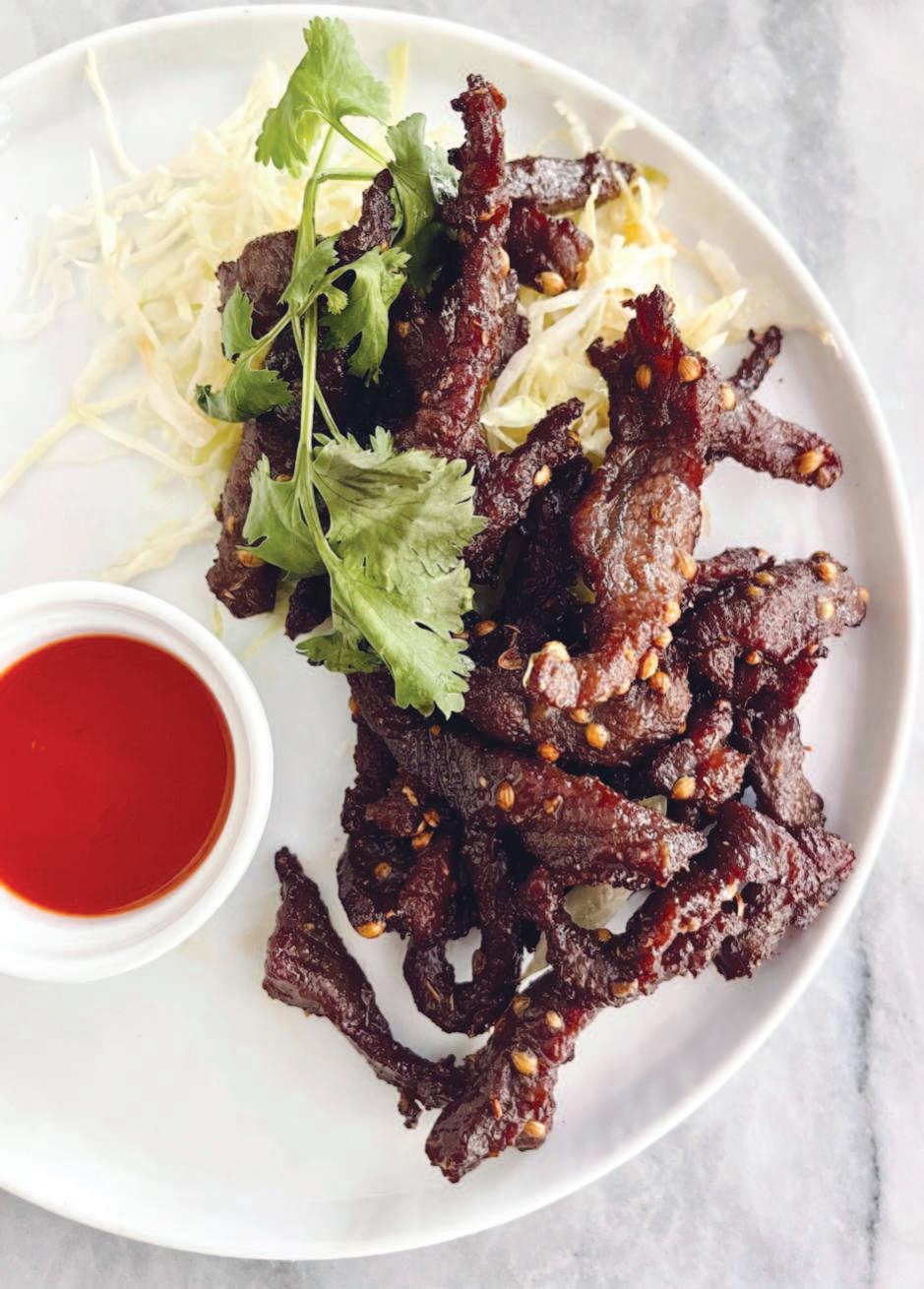
Written by Feast staff
Coriander shines in this appetizer at the beloved Webster Groves Thai joint. Strips of beef are flash-fried and cooked with a mixture of palm sugar, sea salt and crushed coriander. Big, bold flavors shine with underlying citrus, and floral and earthy tones permeate throughout, providing a unique tasting experience in a deceptively simple dish.

The CWE has no shortage of places to grab a drink, but there’s something about the bar at Brasserie by Niche that’s transportive, and it keeps us coming back. Take a seat at this St. Louis classic and order an equally classic cocktail: the Manhattan, which at Brasserie is as stunning to look at as it is to drink.
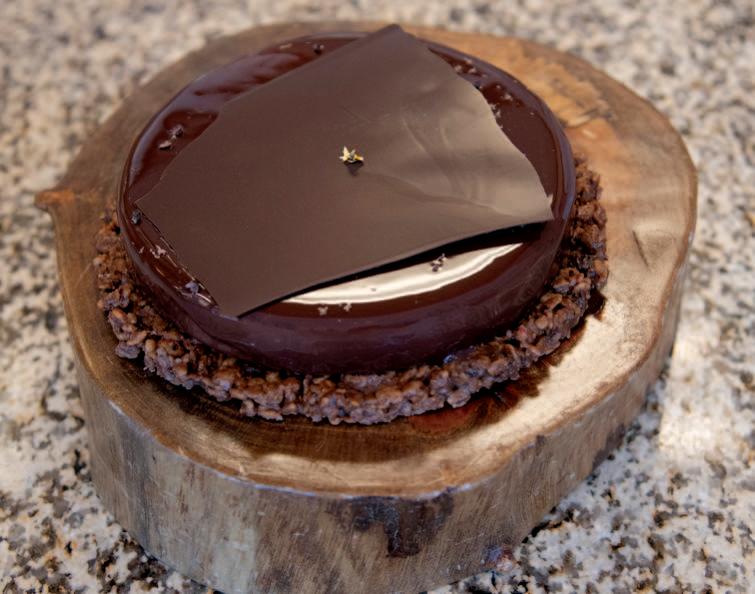
Nathaniel Reid Bakery | THE GUYANA Award-winning baker Nathaniel Reid isn’t James Beard-nominated for nothing. A trip to NRB in Kirkwood is a delight not only because the service is exceptional, but also because these pastries can brighten up the dreariest day. Of all the sweets here, we rave about The Guyana, a dynamic dark chocolate mousse concoction stacked with crunchy caramelized puffed rice, hazelnut croquant, chocolate crème brûlée and chocolate cake.
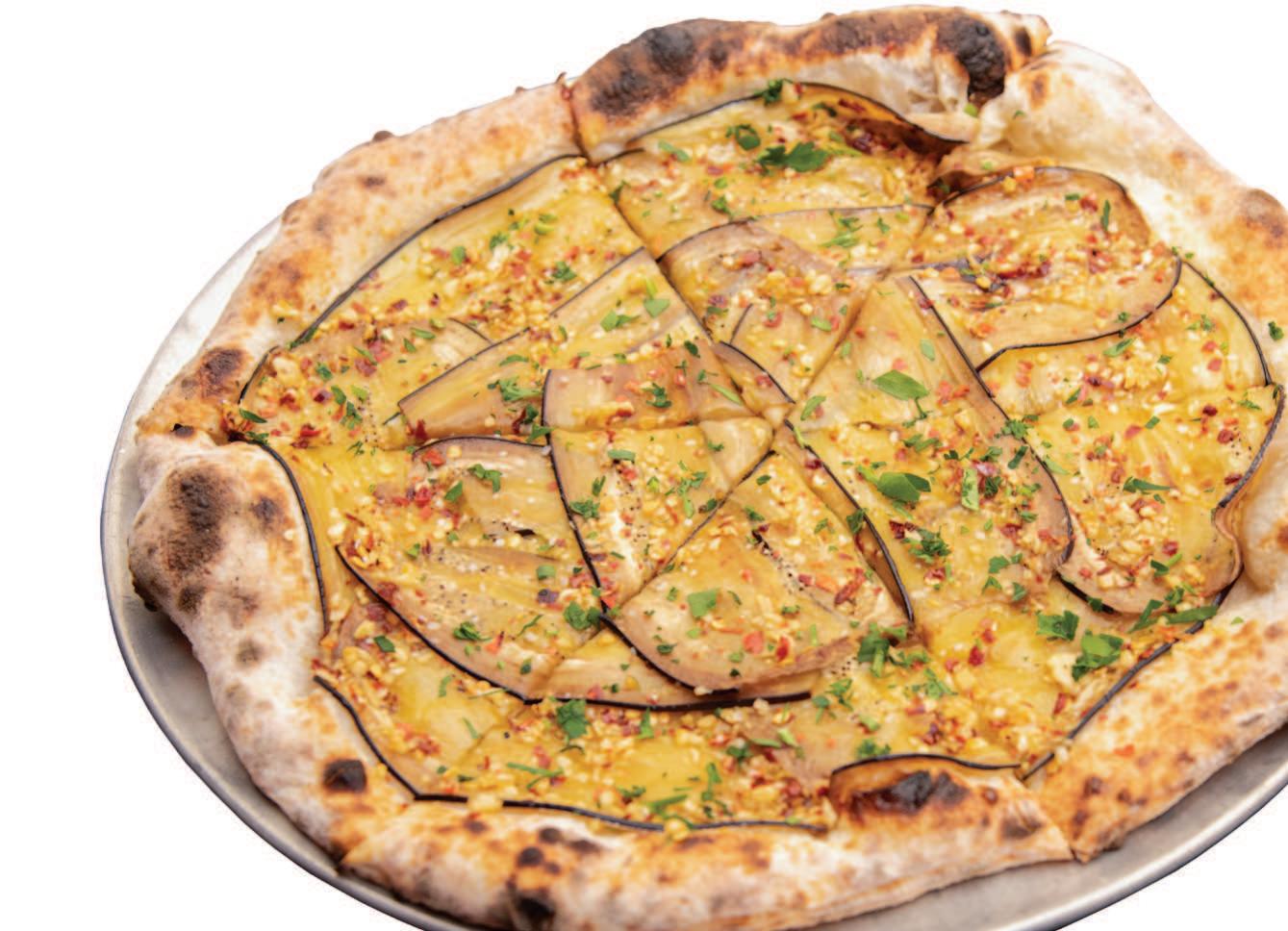
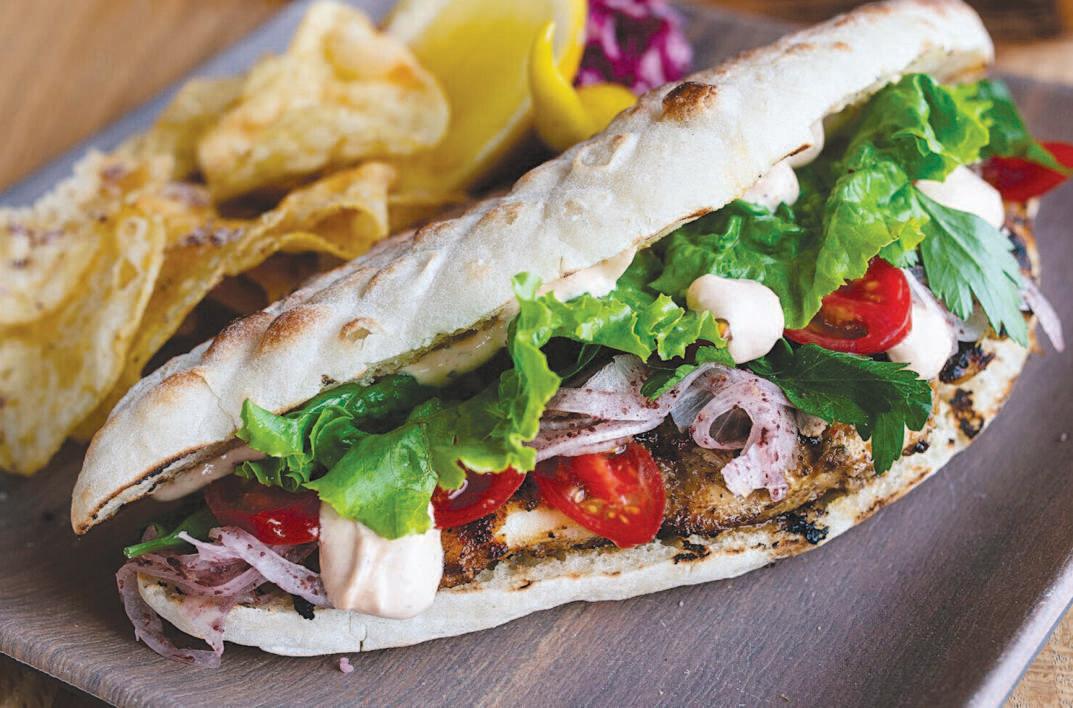
When you think of Balkan Treat Box, fish might not be the first thing that comes to mind. The mouthwatering Balik Ekmek sandwich is a grilled fish of the day served in Balkan’s signature somun bread and dressed in lettuce, parsley, lemon, onion, sumac salad, tomato and BTB sauce.
The tasting menu at TLA is an experience everyone should treat themselves to, but for a more casual evening, we love the à la carte menu. No matter what dishes you order, start with a board, which can be customized with meat and fish, bread, spreads and pickled vegetables.
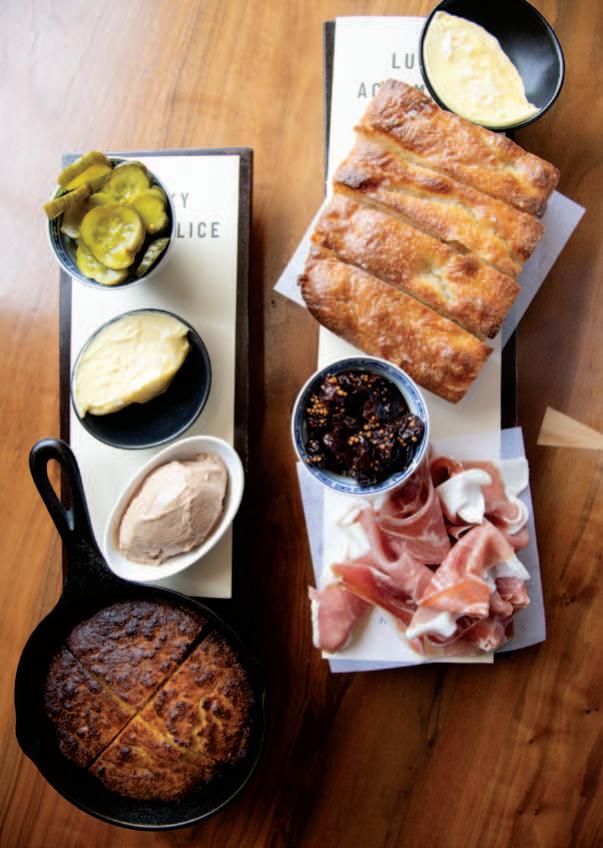

Eggplant skeptics, have we got a pizza for you. The Bonci pizza at Pizzeria da Gloria on The Hill is a showstopper, with thinly sliced, skillfully layered eggplant drizzled with garlic chili oil and topped with fresh parsley. The simple ingredients work together to generate massive flavor that hits all the right notes.

Smash burgers are having their moment, but one version originated in Oklahoma a century ago. The Oklahoma Onion Burger utilizes paper-thin shaved onions smashed into the burger itself, treating onions as a condiment to provide additional flavor, texture and moisture to the meat. Bolyard's version kicks things up with homemade pickles, burger sauce and fresh tomato.
Legend says the Paper Plane cocktail was created in Chicago in 2008 and named after the eponymous M.I.A. song, but you don’t have to jump states to find it. It’s a riff on another cocktail, the Last Word, and Planter’s House shakes up one of the best in town. The bar takes equal parts Barrel King PH Select Rye 111.6°, Amaro Nonino, Aperol and lemon. The result is perfectly bittersweet.

Written by Daniel Puma | Illustrations by
Dim sum is, simply put, a series of small plates, dishes and food items found in traditional Cantonese cooking and other Chinese cuisines as well. The phrase, which translates to “touch the heart” or “close to your heart,” is apt, as dim sum is designed to be paired with tea and enjoyed with family for an experience that satiates not only the body but also the soul.
“I think what makes [dim sum] so special for me, for the Chinese community and for folks that come along for the ride – it’s really about coming together,” Julia Li, co-founder of Lulu Restaurant Group, says. “It’s meant to share time with loved ones and catch up. Dim sum is
close to your heart, and coming together with friends, family and loved ones – it’s a sacred time to eat great things and relax.”
A dim sum experience can offer insight into the history and culture behind it. “In our culture, people have a hard time saying, ‘I love you,’” Li says. “It’s just not part of our language, but we say it very much by eating with each other. So, having a variety of food and being able to offer that to people and introduce them to our cuisine is very much an act of love.” That same love extends back to the kitchen, where each bun and dumpling is prepared by hand, a time-intensive process that keeps tradition alive.

Dim sum is close to your heart, and coming together with friends, family and loved ones –it’s a sacred time to eat great things and relax.
– JULIA LI
With its expansive options and lightning-fast service, dim sum can come at you quickly; for the unprepared or uninitiated, the experience can be intimidating. Here’s what to know before you go to get the most out of your meal.
Since dim sum originated in teahouses along the ancient Silk Road, tea is an essential element of the experience. Service traditionally begins with a selection of hot tea, so choose your favorite and settle in.
After tea selection, pushcarts filled with an array of small dishes begin showing up at your table. Although servers are happy to tell you what each dish is, selection is fast paced by design and requires rapid decision-making.



Traditional dim sum includes dishes like shrimp dumplings, shumai, bean curd rolls, turnip cakes, stuffed eggplant, scallion pancakes, steamed barbecue pork buns, chicken feet and soup dumplings – as well as desserts like sesame balls. “[At Lulu Seafood & Dim Sum] We have quite a few Shanghaispecific dishes like pan-fried dumplings,” Li says.

“We also have roasted barbecue duck, jellyfish and fried calamari. And we have baked goods.” In restaurants like Lulu’s that offer more comprehensive menus, mix your favorites with house specialties you may not find anywhere else to amplify your experience.

While many dishes are meat-focused, it’s important to add some greens to balance your meal. “You can’t have good dim sum without getting some greens,” Li says. I would order snow pea tips and Chinese broccoli. That way, everybody eats their greens.”
Although some Chinese restaurants serve a selection of dim sum dishes, here are a few spots in which you can experience a full dim sum service.
Lulu Seafood & Dim Sum 8224 Olive Blvd., University City, Missouri, 314-997-3108, lulustlouis.com
Wei Hong Seafood Restaurant 7740 Olive Blvd., University City, Missouri, 314-726-0363, weihongseafoodmo.com
Wonton King 8116 Olive Blvd., University City, Missouri, 314-567-9997

Written by Mary Andino | Photo by Christina Kling-Garrett
What originated as street food in the Middle East has become a popular dish throughout St. Louis. From the city to the county to across the river, shawarma – with its layers of seasoned, herbaceous beef, chicken or lamb – is king. Proteins are spit-roasted to perfection, carved and served with sauces and fresh veggies. If you are looking to get your fix, below are a few all-star shawarma spots throughout the St. Louis region to visit.
Located in Bevo, Majeed prides itself on its Syrian recipes, all made according to halal guidelines. For a sampler of its best dishes, order the mixed shawarma plate, which comes with beef and chicken shawarma, grilled tomatoes and onions, rice and salad, or enjoy the spit-roasted meats in a wrap with pickles and tahini sauce.
4601 Gravois Ave., Bevo, St. Louis, Missouri, 314-282-0981, facebook.com/MajeedMediterraneanRestaurant
Mazaj Mediterranean and Golden Chicken Abdeljabbar and Mahmoud Abed Abualizz have two concepts in the St. Louis area that bring their Palestinian recipes to local diners. They opened Golden Chicken in 2020 and Mazaj in City Foundry STL in 2023. Both restaurants offer scratch-made beef and chicken shawarma. Enjoy it with their rice, tahini salad or signature garlic sauce, a creamy concoction with a bit of a kick.
Mazaj Mediterranean (inside City Foundry STL), 3730 Foundry Way, Midtown, St. Louis, Missouri, cityfoundrystl.com
Golden Chicken, 632 Jungermann Road, St. Peters, Missouri, 636-244-3031, goldenchickenstpeters.com
Next time you’re on the Illinois side of the river, venture over to West Bank Street Eats for lunch or dinner. Craft your perfect shawarma experience by building your sandwich or bowl with beef or chicken shawarma and adding toppings, including lettuce, sumac onions, pickled cucumbers and cracked olives. Finish it off with one of six sauces: tahini, salsa verde, Sriracha, sambal, tzatziki or toum (a Lebanese garlic sauce).
1407 W. Highway 50 Ste. 104, O’Fallon, Illinois, 618-589-3003, instagram.com/westbankstreeteats



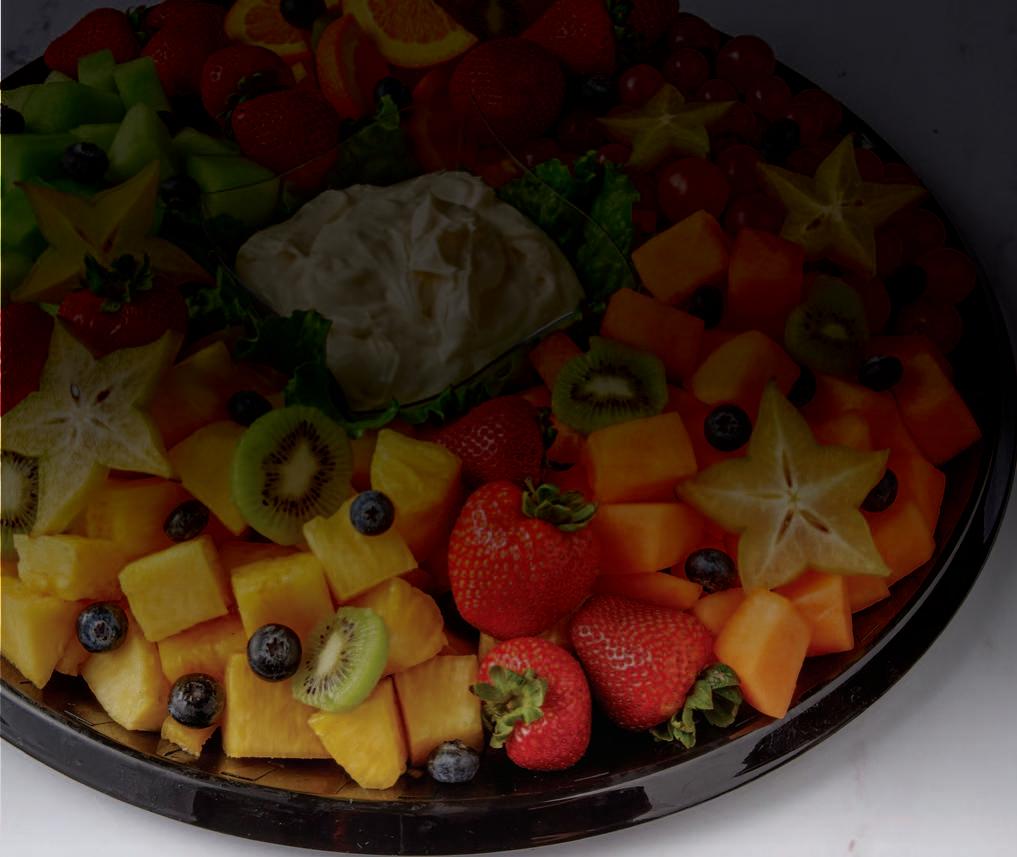





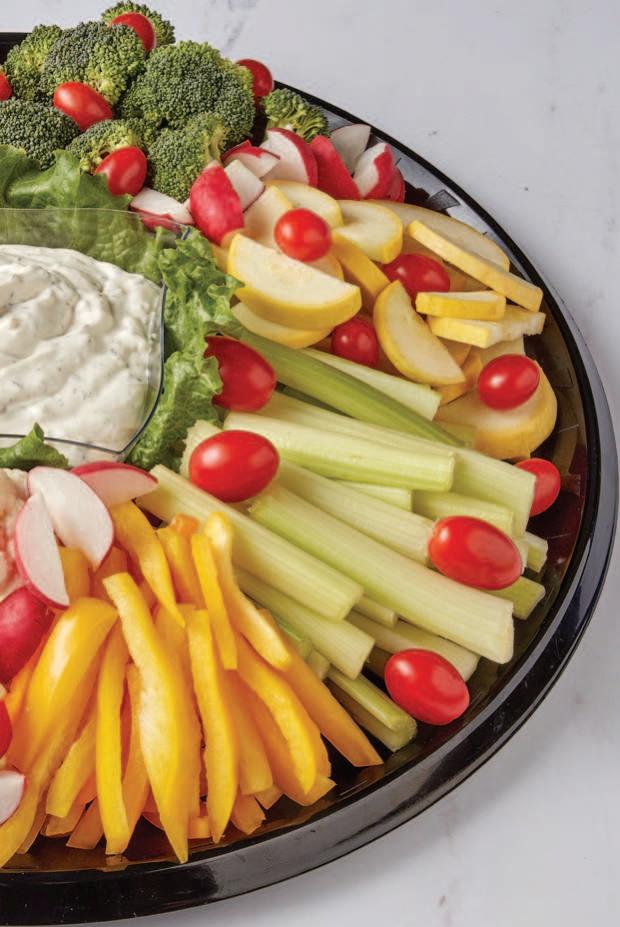











Written by Emily Standlee | Photos by Christina Kling-Garrett
Imagine you’re reading a recipe and come across an unfamiliar ingredient. Instead of searching online, you can probably find it at one of St. Louis’ impressive international markets. Visiting these (often) family-owned small businesses not only supports the local community but also introduces you to new culinary delights; the five markets listed here will get you started.

Walking through the doors of El Morelia Supermercado on St. Charles Rock Road is like buying a one-way ticket to Mexico, complete with all the country's colors, sounds and flavors. In the back of the store are well-stocked meat cases with butchers ready to help you with whatever you’d like – from pounds of al pastor with pineapple to huge, puffy sheets of chicharrones. Turn right, and you’ll find a full-service bakery offering everything from conchas and empanadas to pan sobao. You can also pick up all manner of dried chiles (perfect for making birria), cones of panela (whole cane sugar), hoja santa (Mexican pepperleaf) and more.
Don’t miss El Morelia’s weekend taco stand, with big bowls of serve-yourself toppings and carnitas and tamales on Saturdays
12005 St. Charles Rock Road, Bridgeton, Missouri, 314-209-0014
This family-owned grocery store was founded by husband-and-wife team Suchin and SuDawadee Prapaisilp, who have kept it overflowing since 1999 with foods and provisions from more than 50 countries. The range of products is meticulously organized, making a stroll through the aisles feel like an experience rather than a mundane chore. Follow the hanging flags to explore shelves of ingredients local to their corresponding countries: pickled herring for Norway; spicy black bean paste for Korea; and rolls of chocolate digestives for the UK.

421 N. Kirkwood Road, Kirkwood, Missouri, 314-835-1112, globalfoodstl.com
Like its sister store United Provisions, the fresh fruit and vegetable section at Global Foods is unmatched. Find piles of dragon fruit, tamarind pods, long beans, curry leaves, and fresh chiles sourced from all over the world.

Mideast Market may appear unassuming on the outside but is full of surprises on the inside. Its spacious interior offers a reprieve from the hustle and bustle of Manchester Road; here, discover all sorts of Middle Eastern cookies and snacks, spices, rice, dal, frozen items like green curry cubes and halloumi cheese, and a Halal meat market and café with seating in the back. Even if you wander in without a shopping list, this market’s aisles of Pakistani and Indian foods, among others, will spark your imagination.

Don’t miss the spice section at Pan-Asia, especially if you’re building your own garam masala blend or something similar. Behind the rows of packaged spice mixes, whole spices and individual bottles, you’ll find spice pastes and sauces as well.
Pan-Asia is the kind of superstore where getting lost in the aisles is part of the fun. With shelves of pre-made sushi, hanging Peking duck and a café serving boba tea and hot food, you’ll want to plan an afternoon here. We'd be remiss not to mention the seafood counter at the back of the store, with offerings you won’t find at most mainstream markets. Nearby are multiple aisles of frozen food – we suggest giving the pre-cooked, flash-frozen tofu a try. It comes in little square blocks and can be easily air-fried.
14246 Manchester Road, Manchester, Missouri, 636-220-9999
If you live near The Loop you’re probably acquainted with United Provisions, a central spot for college students and locals alike. It’s easy to see why: The staff is always friendly, and although it carries staple foods, UP is consistently rotating in new ones. If you want to impress your friends with hot pot at home, for instance, you can collect all the components here, from pre-made broth and frozen, thin-sliced pork belly to lotus root and shiitakes. The market’s snack game is also on point – check the aisles for fizzy Ramune drinks, international potato chip flavors and tons of ramen choices.
Don’t miss graband-go items like onigiri, Spam musubi and more, located on shelves on the left side of the store.
Don’t miss Mideast Market’s café in the back, where you can choose from appetizers like papri chaat – a popular street food made with chickpeas, potatoes, yogurt and chutney with a crunchy topping – and entrées like chicken biryani.
14375 Manchester Road, Manchester, Missouri, 636-230-7018, mideastmarket.net
6241 Delmar Blvd., Delmar Loop, St. Louis, Missouri, 314-833-5699, unitedprovisions.com


Written
St. Louis is a hub of incredible breweries, each with its own unique charm. Civil Life Brewing Co. may hover a little under the radar, but it’s one such establishment that continues to evolve in subtle ways, staying true to its roots but always reaching into new territory to keep guests coming back. Dylan Mosley, Mike Bianco and Jake Hafner co-founded the brewery in 2011, which Hafner owns; thanks to their combined efforts, Civil Life just keeps growing better with age.

A stalwart in the local beer world, Civil Life has adapted to accommodate the changing habits of guests while at the same time maneuvering through changes in the craft beer market over the last few years. “You go back to 2011 through 2015 … there was this huge excitement around the [craft beer] industry. Everybody was getting in, and it was a great time to be part of it, no doubt,” Hafner says. But shifts in the bar scene – from the rise in nonalcoholic beverages to the craft cocktail revolution – post-pandemic drinking and dining habits have been tricky to navigate. Hafner adds: “Younger people in 2020 turned 21 and didn’t [necessarily] go to a bar. They also didn’t think about going to bars and restaurants for jobs. And so, you’ve got a few years of just trying to get people back. I think people through the pandemic also turned inward a bit, so their networks aren’t as big, and people just don’t go out as much as they used to.”
To stay ahead of the game, Civil Life has quietly revamped most of its facilities while retaining its old-school pub charm. Inside, the warm wood that lines the space has taken on a new luster thanks to recent refinishing, and the front entrance has been blown out and replaced with large, west-facing windows, welcoming a golden-hour glow into the space as the sun sets.
New features are more obvious outside the bar, where the team took over the space to the north of the main building,
clearing it out to add a dedicated parking lot along with a massive patio that wraps around to the front entrance. Ordering windows overlooking the patio keep things running smoothly inside and out for both staff and guests, and an outdoor space is framed by gardens and flower beds, infusing the setting with a natural beauty that complements the urban surroundings. “The flowers outside are as good as you’ll find in any facility anywhere, and mostly it’s my neighbor Margaret, who lives [nearby] and became one of my best friends,” Hafner says. “She cares for the flowers and maintains them. And my mom’s a horticulturist – she helps with planting [along with] her friend Teresa, who comes down to help. Every single day I get called over to a table by someone who appreciates the beautiful gardens and their efforts.”


Although Civil Life’s brews are some of the most popular in St. Louis, with offerings like American brown ale, Angel and the Sword, Goal!den ale and Czech pilsner leading the ranks, they’re not the only things going on at the pub. Mindful of how drinking has changed over time, the trio of co-owners focuses on offering alternatives for people who may want something beyond beer when they visit.
It’s given Hafner a reason to cultivate a remarkable wine list. “It’s my passion project,” he says. “We have well over 100 bottles on the list now. We’ve got most regions represented, and a lot of different price ranges, too. We’re just trying to create an environment that invites people down. We just don’t want to lose those beer drinkers that are in a group, because there are other people who want to drink wine.”
Civil Life has consistently promoted the idea of civility as a way to enjoy life in a relaxed and comforting environment. From top to bottom, this prevailing philosophy is exemplified in the details. The team’s dedication to providing a diverse and high-quality beverage selection is just one example of how the brewery strives to create a welcoming and inclusive environment for its patrons
Civil Life Brewing Co., 3714 Holt Ave., Tower Grove South, St. Louis, Missouri, thecivillife.com

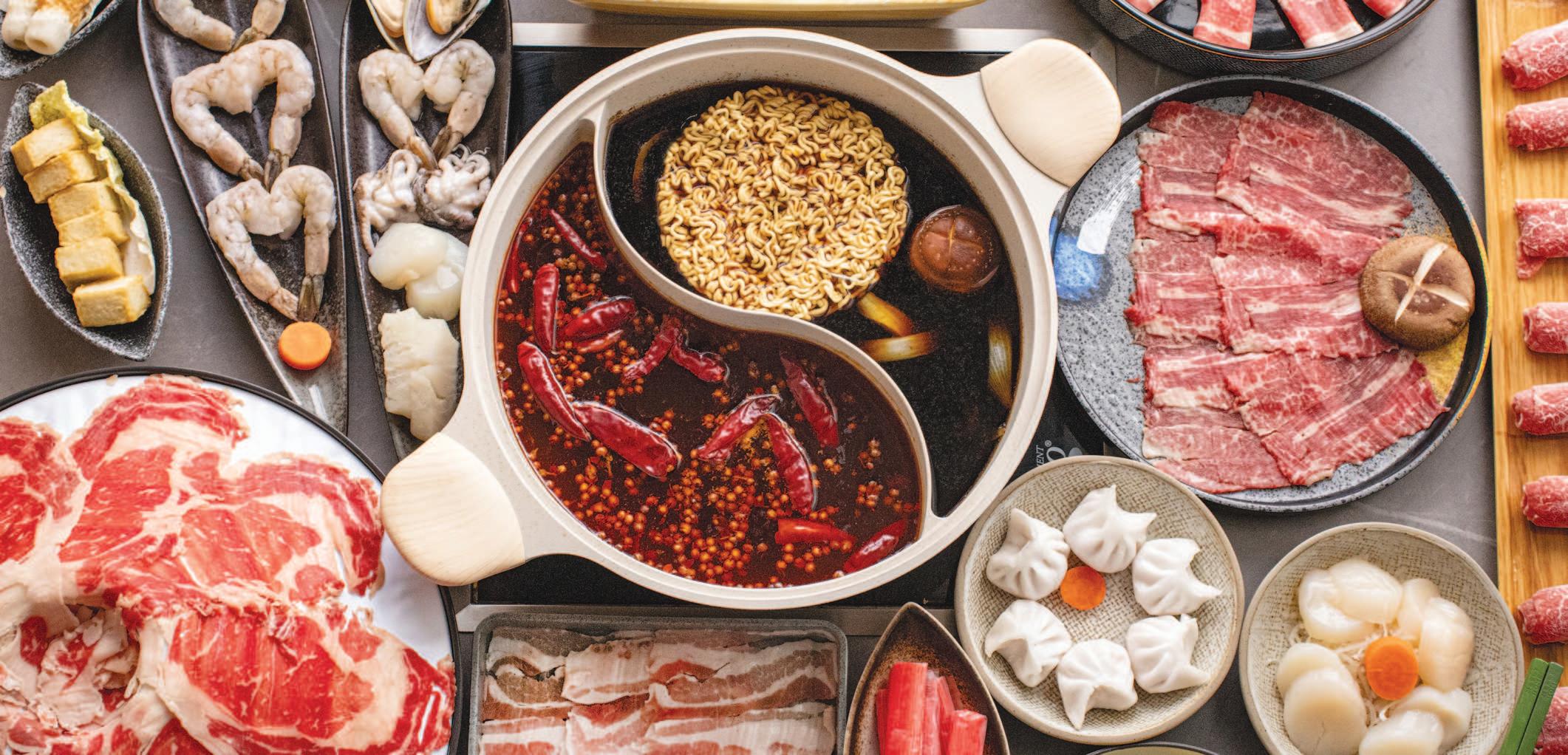

At Umami Seasons Hot Pot, visitors will find one-meter planks and volcano-shaped trays topped with thinly shaved cuts of premium beef, prepared for cooking in yin yang-shaped hot pots filled with bubbling herb-infused broths. “In Taiwan, we care about plating and the way food is presented,” says owner Poyi Liu, who is a native of Taipei. “The focus is, of course, on the freshness of ingredients but also on making sure everything is visually pleasant.”
Liu came up with the name Umami Seasons to highlight the concept’s seasonal menus, which feature rotating broth options such as Japanese Sukiyaki, Golden Chicken Broth and Nutritious Herbal Broth cooked with mushrooms and Chinese ingredients including goji berries. Guests build their own hot pots by choosing from around eight different types of broth options and a variety of proteins, vegetables and starches.
In addition to choice cuts of beef, including the Ribeye Volcano Delight, Bento-Style Eye of Round and One-Meter Meat Lover’s Platter, Umami Seasons also offers pork belly, chicken breast and a wide selection of seafood options such as shrimp, scallops and fish balls. A dipping sauce bar enables guests to build their own layered accoutrement. Liu’s favorite combination is ponzu, oyster sauce, green onions, a big spoon of garlic and cilantro – a satisfyingly savory sauce to pair with eyecatching fare that’s poised to please patrons year-round.
6602 Delmar Blvd., St. Louis, Missouri, 314-319-1146, instagram.com/umami_seasons



In the Delmar Maker District, Esca features a menu of coastal Mediterranean cuisine and an accompanying bar program in a European bistro-style setting. Chef-owner Ben Poremba describes the concept as a “coastal Mediterranean grill and bar, with an emphasis on charcoal and wood cooking.” Bengelina Hospitality’s wine and service director, Luciano Racca, explains the meaning behind the name: “The name Esca originates from Spanish la escalivada, which is a grilled vegetable dish Ben has always loved,” he says. “Here, we’re focusing specifically on the French and Italian rivieras. It will hopefully remind people of the vacation they went to in France or Italy. It’s simple food, good wine and good service.”
Gucci wildcat wallpaper embellishes the entryway, opening up to an airy, bistro-like dining room
bustling with the sounds of the elegant open kitchen. From the menu, choose from highlights such as French brandade (a creamy salt cod); homegrown lettuces with charcoal vinaigrette and pecorino sardo; and branzino with olive-pistachio tapenade. The ambitious drink program features a foundation of classics like Old-Fashioneds, Negronis and Martinis. Much like Bengelina’s many developments on the horizon, Esca’s lively set of offerings is sure to keep its visitors enticed.
5095 Delmar Blvd., St. Louis, Missouri, 314-365-2686, bengelina.com/esca
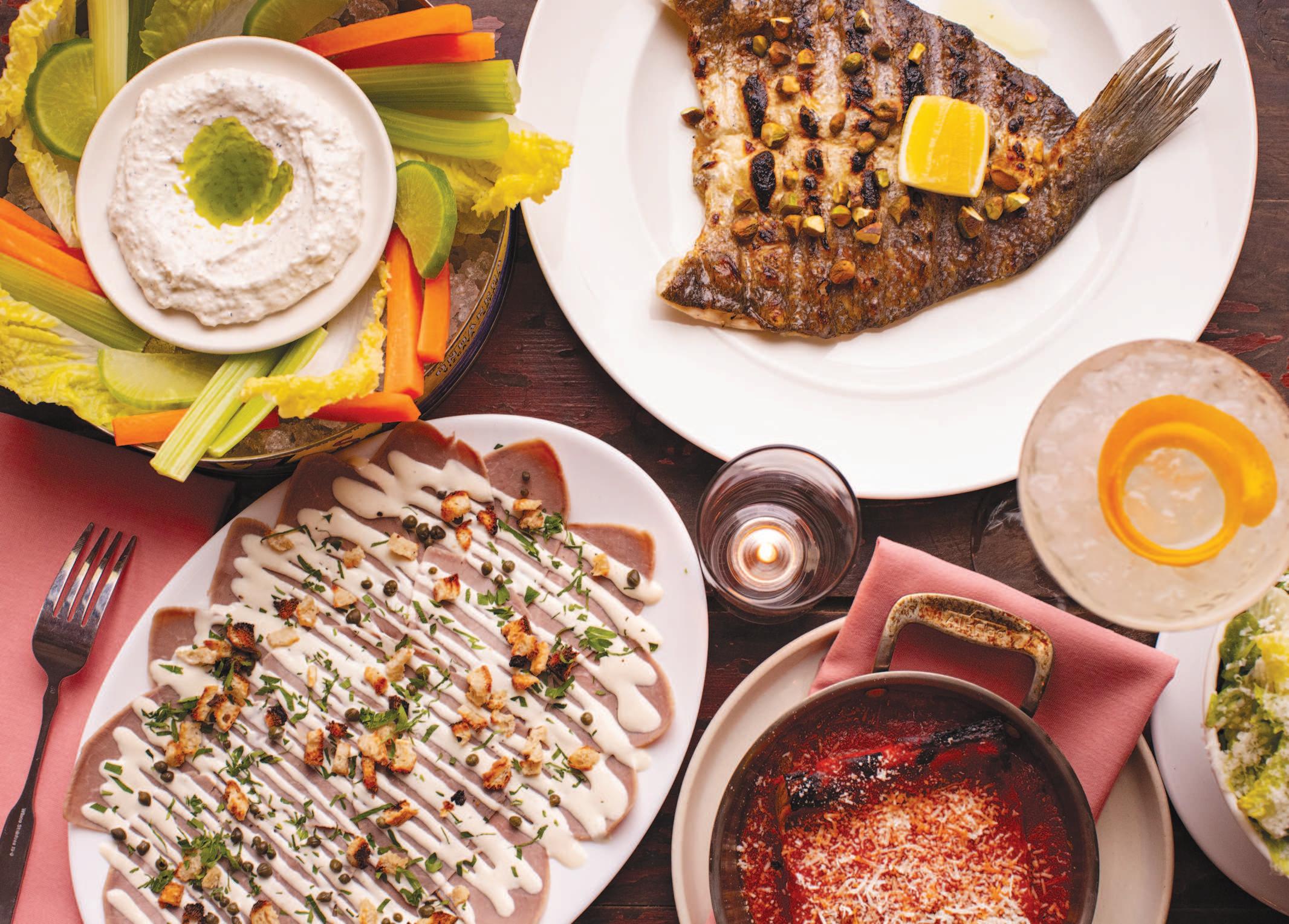

Written by Daniel Puma
On the east side of Clayton, Wydown packs destination restaurants into a quarter-mile stretch, transformed by the departure of classics and the reinvention of others.
Whether it’s date night or an evening out with friends, Wydown’s vibe is casually elegant, with gorgeous yet unfussy interiors and menus to match. Reservations are recommended at most of these establishments, but small groups might get lucky with a walk-in seating – especially earlier in the evening. The beauty of these versatile restaurants is reinforced by their nearness to one another, allowing patrons to create a progressive dinner of sorts as they wish. Begin with cocktails at one place, snacks at the next, entrées at a third and desserts at a fourth, or stay in one spot to soak in the evening.
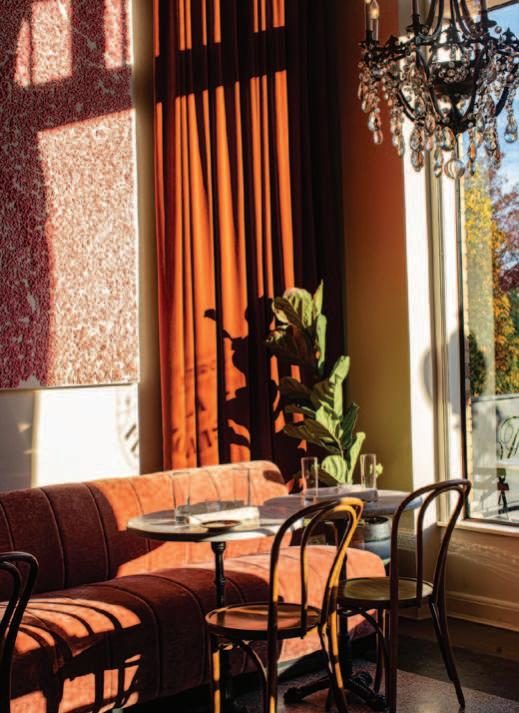
Bistro La Floraison the newer entries to the area, and the restaurant is one of the most unabashedly romantic spots in the region. The food and drink menus carry heavy French influences, and the interior blends old and new world designs, modern nuances and classic bistro flare. Don’t miss the spritz hour, with specials on a variety of drinks and small bites offered by the piece; it’s a great way to start any evening.

Next door is Akar, the brainchild of chef Bernie Lee, who draws upon his Malaysian heritage and trips around the world to create stunning dishes combining tradition and innovation. Lee has been an icon of the dining scene for a decade, earning a following from his previous restaurant, Hiro. Akar is the place to experience something new and escape the mundane.


Across the street is Bar Moro, a Mediterraneaninfluenced tapas restaurant from the Bengelina Restaurant Group. The restaurant has a dimly lit, cozy atmosphere perfect for a multi-course full meal or simply some small plates to whet the palate. If you’re looking for a setting that blends sophistication with a relaxed and lively atmosphere, Bar Moro is the place to visit.
occasions. At first glance, the menu reads like a traditional steakhouse, but a more extended look reveals modernized renditions of classic dishes.
If you’re in the area at lunch, check out Protzel’s Delicatessen. The iconic restaurant is a mainstay in the area and beloved throughout St. Louis, serving up a combination of traditional sandwiches along with “special” and “extra special” options. Stop over at Protzel’s, pick up a sandwich to-go and head to one of the nearby green spaces for a picture-perfect autumn lunch.

Akar, 7641 Wydown Blvd., Clayton, Missouri, 314.553.9914, akarstl.com
Bistro La Floraison, 7637 Wydown Blvd., Clayton, Missouri, 314-725-8880, bistrolafloraison.com
Bar Moro, 7610 Wydown Blvd., Clayton, Missouri, bengelina.com/barmoro
Peno, 7600 Wydown Blvd., Clayton, Missouri, 314.899.9699, penosoulfoodstl.com
Wright’s Tavern, 7624 Wydown Blvd., Clayton, Missouri, 314-390-1466, wrightswydown.com
Protzel's Deli, 7608 Wydown Blvd., Clayton, 314.721.4445, protzelsdeli.com




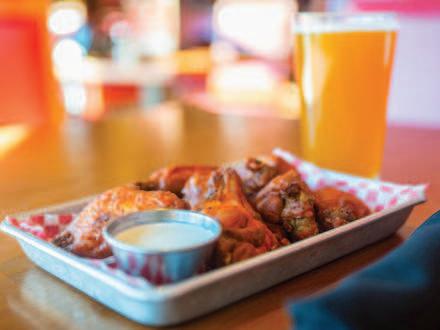



Written by Mary Andino


St. Louis’ restaurant scene has long been a rich tapestry, interwoven with heritages and cultural traditions from around the world. Until recently, however, that mosaic did not substantially include the cuisine of the Philippines. In recent years, several chefs and restaurateurs have brought their takes on Filipino cuisine to St. Louis.

Filipino immigrants and Filipino Americans have had a long, enduring presence in St. Louis and the state. The country is the sixth-largest source of immigrants to the area, and more than 25,000 Filipino individuals live in the state. There is no singular version of Filipino cuisine, co-owner of
The Fattened Caf Charlene Lopez-Young is quick to point out. “The Philippines is made up of 7,000 islands, so there’s not one particular dish that is made the same in every region,” she says. That diversity is represented in the Filipino restaurants in St. Louis, each offering its own take on these traditions.
Since starting as a pop-up in 2019, The Fattened Caf has exploded in St. Louis, with a booth at CITYPARK stadium, a location on Washington University in St. Louis’ campus, a location inside Earthbound Beer and a new brick-and-mortar off Cherokee Street. It also sells packaged Filipino-style sausages called longganisa at Fresh Thyme, United Provisions, Pan-Asia and Fresh Market Place in Chicago.
“It’s been a really exciting time to witness people opening up their food experiences and diversifying them,” Lopez-Young says. More and more people who have never tried Filipino food are excited to get their first taste. At WashU, students have turned going to The Fattened Caf into a tradition, going for dinner with friends once a week. “We’ve received letters from students … just saying that it’s been great for them to have us here,” she says.
For Lopez-Young and her husband, Darren Young, The Fattened Caf is a way for them to express their identities. Lopez-Young, the daughter of Filipino immigrants, and Young, an African American, embrace what they call Filipino soul food. “St. Louis is a really big barbecue city and there’s a lot of soul food spots, and there’s a way to incorporate that identity into Filipino barbecue,” Lopez-Young says. The duo merges Filipino flavors with traditional soul food ingredients. For example, normally the dish laing is made with fresh taro leaves cooked in coconut milk and flavored with lemongrass, garlic and shrimp paste. Since it’s difficult to source fresh taro in the States, they swap it for collard greens. “There are traces of Filipino roots in the recipes we’re developing, and it tastes familiar to both identities,” she says. The restaurant’s pork steak tocino represents another blend of iconic dishes: St. Louis’ famed cut of pork is marinated in a traditional blend of spices, garlic and pineapple juice.

For Lopez-Young, cooking Filipino food is about adaptation and creativity; the question of “authenticity” should not be the measure of quality in a diasporic food culture. “We have found ways to cook our dishes with the resources that are available in that specific [immigrant] country. So it doesn’t have to look like traditional Filipino food for it to be Filipino food, the way someone’s grandmother made it,” she says.
It’s been a really exciting time to witness people opening up their food experiences and diversifying them.
– CHARLENE LOPEZ-YOUNG
St. Louis is large enough to support multiple Filipino restaurants, and rather than seeing one another as competition, these restaurants each fill a different niche, collectively conveying the plurality of Filipino tradition. Siblings Rocky, Resty, Rolando and Randy emigrated from Manila to the States as children with their mother, Josie Seele, and their father soon followed. The family had owned a barbecue and seafood stand in Manila and brought street food dishes such as pork and shish kebabs to the public when they opened Manileño in 2024.
While The Fattened Caf embraces adaptation, the family behind Manileño dedicates itself to re-creating dishes for their big Sunday dinners.
“My mother and I just flew out to California to visit various Filipino restaurants, do research and development and grab some ingredients – especially [for] some of the things we use in our pastries,” Rocky Torio says. They are also working on sourcing coffee beans and beer from the Philippines. Compared to classic coffee sourced from Ethiopia or Columbia, Torio considers these beans extra strong with a distinct flavor.
The drinks and dishes at Manileño are all opportunities to introduce customers to something that’s representative of the family’s food



traditions. One of the restaurant’s most popular dishes is the Bistek tagalog. “It’s beef that’s been marinated for 24 hours to get this sweet, citrusy flavor,” Torio says. A key ingredient is calamansi juice; known as the Philippine lime or lemon, Torio describes the fruit as a hybrid between a kumquat and a mandarin. It gives the dish its distinct tart yet sweet note. On the sweet side, the ube ensaymada has been a standout hit with customers. A sweet brioche dough is filled with
ube halaya, topped with Manileño’s signature ube frosting and finished with a generous amount of Parmesan cheese.
Although the family is from Manila, Manileño tries to showcase dishes from across the country, embracing its regional differences. “My mom is from a different province, as is my father, so we cook various dishes,” Torio says. The menu includes dishes from multiple provinces, from Bicol to Pampanga. The siblings’ mother heads up the cooking and dedicates hours to making dishes by hand, the way she was taught. For the kare kare stew, which originates from Pampanga, Seele slow roasts peanuts, blending them into a thick, savory sauce before slow-cooking oxtail and adding bok choy, eggplant, long beans and shrimp paste. You can tell the dish took hours to make when you taste it.
Both Torio and Lopez-Young are excited to see how far Filipino restaurant representation has come in St. Louis. “We still have a long way to go, but I’m definitely proud that we’ve come so far,” Torio says. For Lopez-Young, the selection of The Fattened Caf to be one of 25
local providers in the CITYPARK Stadium was massive. The stadium’s culinary roster was designed to represent the heart and soul of the city, and the inclusion of The Fattened Caf “shows that the St. Louis food scene has really embraced the existence of Filipino food,” she says.
St. Louis is also home to Kain Tayo and the Filipino Bakery Cafe & Market, both of which have further raised the Filipino food profile in St. Louis. “It’s been fun to see how Filipino food has changed and how it’s interpreted based on who’s cooking it,” Lopez-Young says. “You can get soul food barbecue from us, you can go to Kain Tayo and get good traditional dishes, and then Manileño has a finer approach to Filipino food. It remains that Filipino food is for everyone, and there’s a place for that here in St. Louis.”
The Fattened Caf, various locations, 636-498-4240, thefattenedcaf.com
Manileno, 3611 Juniata St., Tower Grove South, St. Louis, 314-296-3131
Kain Tayo, 2700 Locust St., Midtown, St. Louis, 314-396-2110, kaintayotrenton.wordpress.com
Filipino Bakery Cafe and Market, 11654 Dorsett Rd., Maryland Heights, 314-710-6335, stlfilipinobakerycafe.com
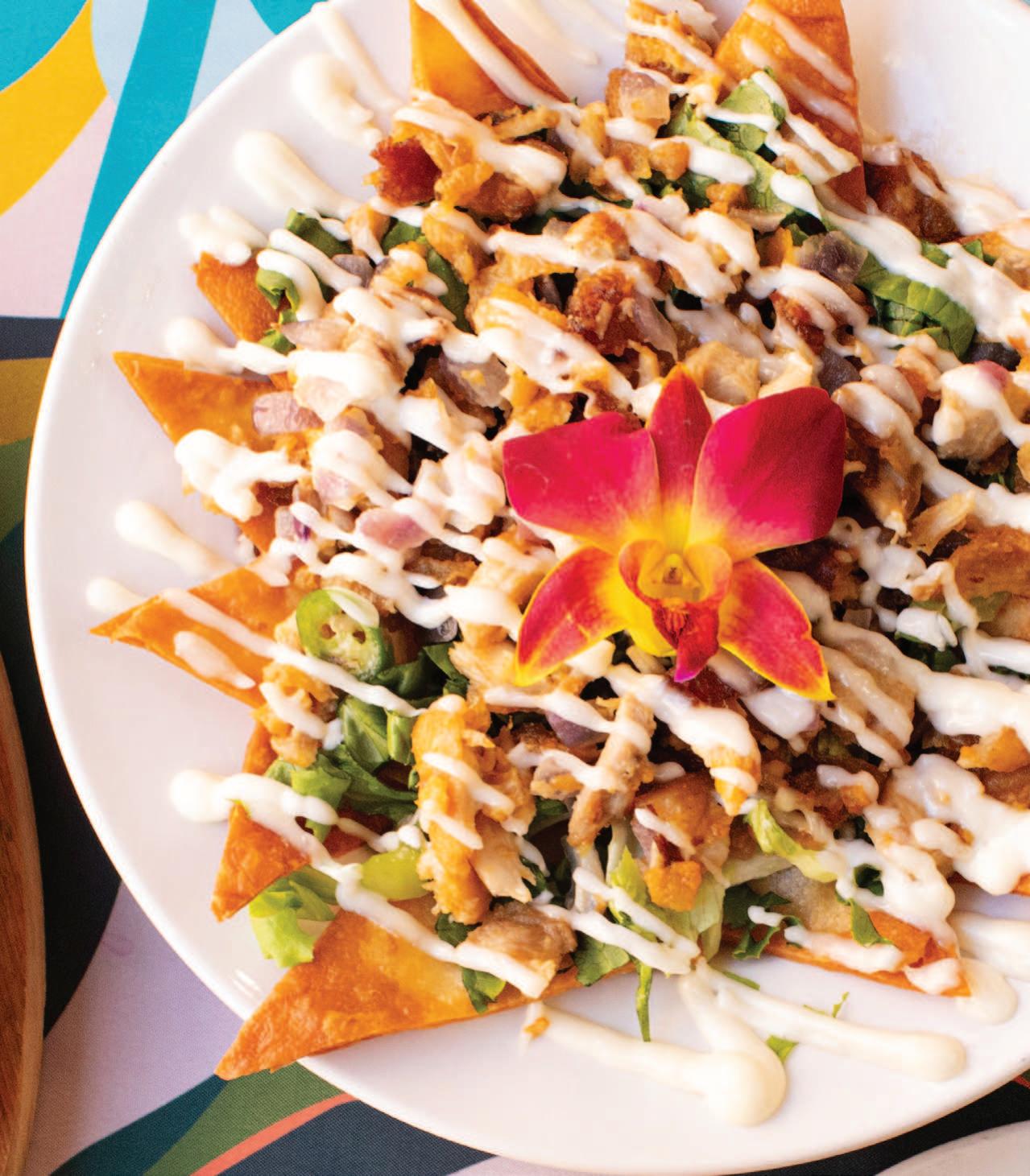
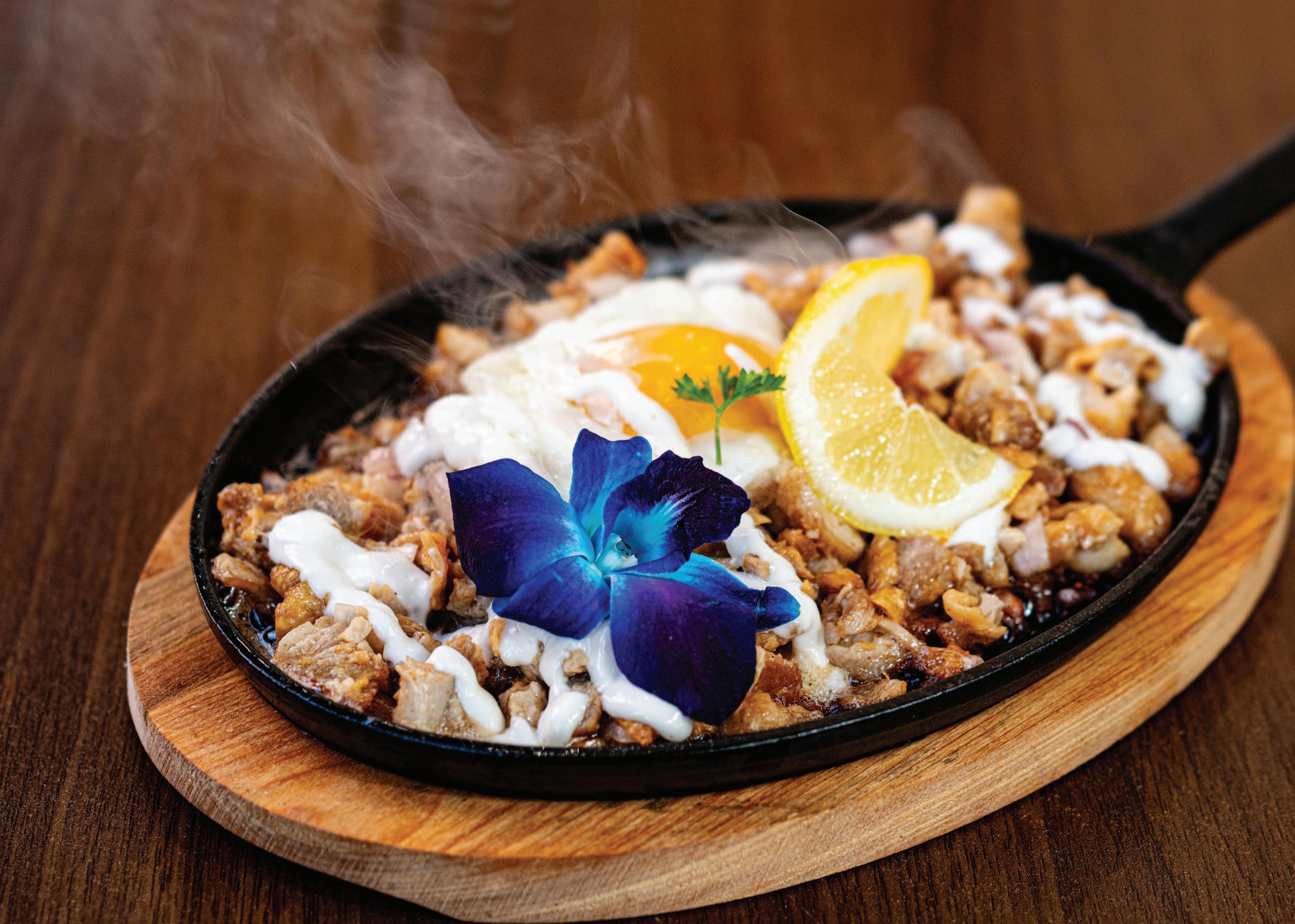
It remains that Filipino food is for everyone, and there’s a place for that here in St. Louis.
Cities are often defined by their pizza styles, and St. Louis is no exception. But look past the iconic (and often polarizing) St. Louisstyle pizza and you’ll find a rich diversity of styles that pull from all over the world. Some restaurants hew closely to traditional techniques, while others create something entirely different.

Pizza styles have exploded across St. Louis in the last decade with options to suit anyone’s taste.
Gerard Craft of Niche Food Group serves three distinct styles of pizza across Pastaria, Fordo’s Killer Pizza and Bowood; the chef is well-versed in how non-St. Louis-style pizza has taken hold recently. “The Good Pie was before Pastaria – arguably the best Neapolitan in the city at that time,” he says. “Pastaria brought on a neo-Neapolitan style.” Before that, he says, a few standouts existed, that pushed the pizza landscape forward. “One of the [first] big pizza [restaurants] in St. Louis that wasn’t St. Louis style was the New York-style [pie] at La Pizza,” Craft says. “One of my favorite pizzas has always been Blackthorn Pizza. And then Pi Pizzeria came into the equation with their deep-dish cornmeal crust.”
Craft’s passion for dough and patience for research and development have often set him apart. “For Pastaria, Fordo’s and even Bowood, I did all the R&D, just kind of playing around at my house and setting up experiments to go over and over different dough recipes, different flours,” Craft says. “Bowood was farm-driven and naturally leavened; Fordo’s was an interpretation of Neapolitan pizza I had in Japan.”
One of the most unique (and very St. Louis) aspects of the local pizza scene is the respect each has for others in the field, where it’s widely acknowledged that diversity in styles elevates the game. “One of the greatest pizza nerds of St. Louis is Scott Sandler,” Craft says. “He started Pizzeoli, Pizza Head and [Pizza Via]. He’s up there on the top of the pizza scale. [Ted Wilson of] Union Loafers has an interesting family tree; he helped set up Urban Chestnut Brewing Co. Noto has an extraordinary pizza; Pie Guy has incredible pizza.”
We talked to chefs around St. Louis who have pulled inspiration from across the globe to craft their own pies into some of the local best.



Pizza Via Scott Sandler
Defined | a blending of traditions and techniques from across the pizza spectrum to create superior flavors unbeholden to a specific style. Heavily influenced by Neapolitan and other wood-fired pizzas but creates its own rules to enhance flavor and texture.
Sandler: It takes a lot from Italian elements, but I would say it’s more of a West Coast, wood-fired … kind of in that lineage. It takes from all the stuff I’ve learned over the years. I think the crust is special because it’s a blend of three different flours: The whole wheat in there gives some bran and germ, giving it more depth of flavor. There’s double zero in there for the extensibility – it’s going to [provide] a softer crust and melt-in-your-mouth [quality]. Then, I have the bread flour in there for strength, which allows the pizza to be both crispy and soft at the same time. There’s a lot of thought that goes into how everything is balanced.

Motor Town Pizza
Simon Lusky
Defined | a thick, rectangular crust, the result of historically baking in steel pans borrowed from the area’s automotive plants. Two strips of cooked tomato sauce line the top along with a ring of crispy cheese (frico) formed when cheese meets the pan’s edge.
Lusky: We use bread flour. It’s got more chew, more snap. Much of the fermentation is done in the pan it’s cooked in. The pans are coated in olive oil, which gives it such a nice crust. Then, we start with toppings. Traditional: cheese first, sauce on top and we offer unique blends. We have a traditional brick-style cheese, but we also have smoked provolone; we have some pizzas that utilize cheddar, Chihuahua cheese and fresh mozzarella as well. The key with Detroit style is we want to go all the way to the edge. The cheese melts, drips down the corner, gets super crispy corners [and a] black line around the top – the tire stripe around the perimeter.

O+O Pizza
Mike Risk
Defined | a crispier crust, cold-fermented dough, fresh tomato-focused sauce and Pecorino Romano finisher. Distinct from Neapolitan with high-gluten flour and longer cook time. Additional toppings serve to enhance the flavor, and mozzarella is treated as a topping, not an automatic component.
Risk: New Haven being so tomato- and Pecorino-focused, it’s a little bit saltier and more tomato-forward. We just wanted to have crust that was going to be a little bit crispier. We do cheese first on the [crust], tomato on top and then whatever toppings, and lastly, we top it with Pecorino. If we put the sauce on the bottom and then cheese, it would just flop. The sauce is a raw tomato sauce, fresh oregano, salt and pepper.

Andrew Fair
Defined | a light, tender, thick-crust pizza found throughout the streets of Rome, traditionally priced by weight and served by the slice. Gelateria’s is baked in Detroitstyle pans. Toppings are often added right before serving.
Fair: There was a focaccia recipe that came with the business, and it was a pretty good recipe at its core; it just needed to be better manipulated. I started messing with it. I further developed the gluten in the dough, and I added an overnight fermentation to get more flavor. We were then able to scale back the portion of dough in the pan. [While we use a Detroit pan], we’re not using a Detroit-style dough. Our pizza is lighter. The nature of the pan means you end up with that frico like on the Detroit style, but we’re not using brick cheese. We also are not cooking the sauce; we’re using a raw tomato product. We try to keep the toppings pretty Italian.
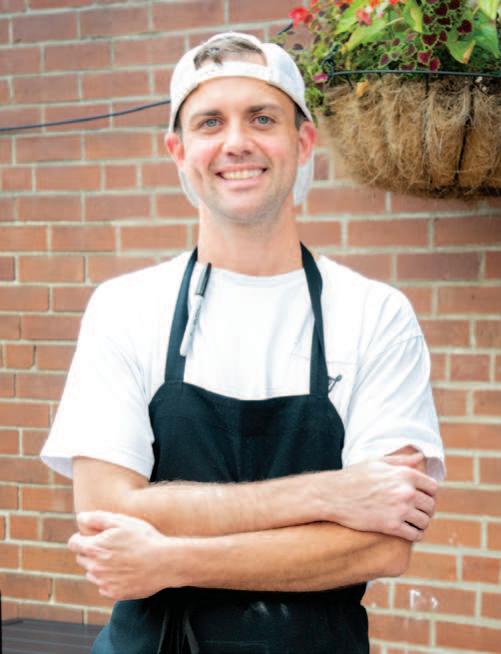
Pizzeria da Gloria
Joe Kurowski
Defined | a round shape with a char-free, soft raised edge. Dough is built from water, salt, yeast and flour and fermented for up to 24 hours, then topped with raw tomato, buffalo mozzarella or fior di latte and extra virgin olive oil. Cooked in a wood-fired oven at around 800 °F.
Kurowski: We only do 100 percent sourdough for the yeast, and we use a wood-fired oven. For a proper Neapolitan, the cook on it is hotter, and it doesn’t get as crispy. We cook ours at a lower temperature to get it crispy. Also, I like a little bit of flavor in the crust, and the sourdough and long fermentation helps a lot with that. As with true Neapolitan pizza, the biggest similarity to ours is we like to use local products as much as we can.

Katie’s Pizza and Pasta
Katie Lee Collier
Defined | no one definition here, but Katie’s stands out for its ability to capture the same Neapolitan-esque elements of the restaurant’s pizza into frozen offerings retaining flavor and quality.
Collier: It’s the same practices, ingredients and recipes as in the restaurant. There are some specialty Neapolitan frozen pizzas out there, but no one is hand stretching; it’s all automation, and no one is using the toppings ingredients we are – it’s an innovative, seasonal [approach] with specialty ingredients. Our frozen pizzas [utilize] black garlic, burrata cheese; the pepperoni is honey drizzled. It’s definitely not traditional Neapolitan because of the boundaries we stretch on the toppings. We do a 42-hour fermentation [on the dough]. The durum we use is a local, three-day’s-fresh, milled durum made with ancient grain and is high in protein.
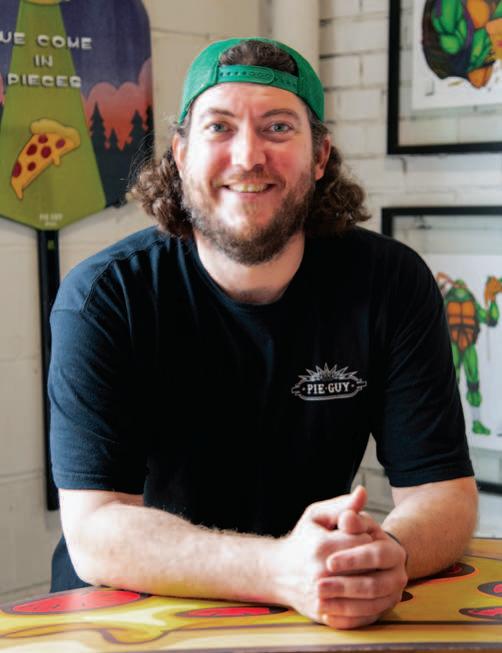
Pie Guy
Mitch Frost
Defined | an oversized, handtossed crust, thicker edge with a balance of crisp and chew thanks to high-gluten flour. Slices are folded along the center to eat, and toppings are assembled over a thin layer of raw tomato sauce and full-fat mozzarella.
Frost: [Pie Guy is] New Yorkstyle, “Teenage Mutant Ninja Turtle” pizza. We use a natural sourdough culture and cold ferment during a two-to-threeday process. Also, I blend specific flours to strengthen a light, fluffy dough. When you’re getting a pizza [from Pie Guy], you know you’re getting a crispy crust on the bottom; it’s not soaking down the middle. We make a point to have a very minimal edge crust, and the toppings go across the whole thing.



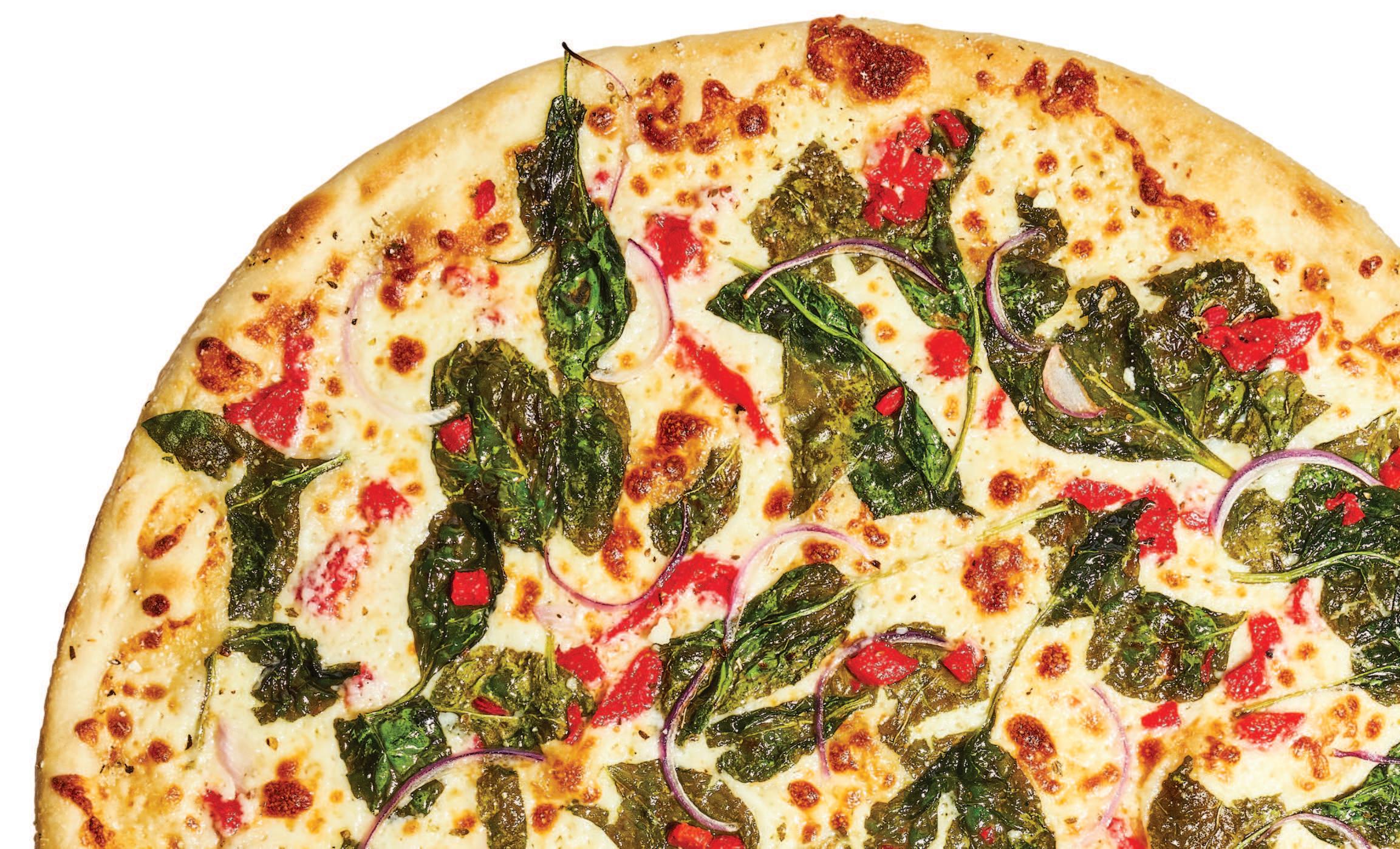




Written by Shannon Weber | Photos by Christina Kling-Garrett

| Terror Tacos
Upscale | Tree House
Tree House has long been a favorite for plant-based fare in a breezily upscale setting. The menu offers dish after dish of approachable fare, with choices ranging from chikn fried katsu sandwiches and wild mushroom-stuffed ravioli to sharable plates like krab cakes, maduros (plantains) and queso fundido.
Like Treehouse? Try Small Batch, where elegant, seasonal dishes and thoughtfully crafted cocktails abound inside a stunning space.
3177 S. Grand Blvd., Tower Grove South, St. Louis, Missouri, 314-696-2100, treehousestl.com
Terror Tacos brings metal vibes and a host of plant-based relaxed fare to the mix on South Grand, and the restaurant has retained its popularity since opening in 2021. Brothers Bradley and Brian Roach have a lot to offer at the casual eatery, with a monster menu of tacos, burritos, nachos and more. The brothers Roach aren’t messing around with flavor or heat, bringing both to popular choices such as the Double Diablo and birria tacos.
Like Terror Tacos? Try Vegan Deli & Butcher, a favorite of ours, where plant-based mastermind Chris Bertke has created a killer sandwich menu and an ever-changing rotation of weekly specials.
3191 S. Grand Blvd., Tower Grove South, St. Louis, Missouri, 314-260-9996, terrortacos.com
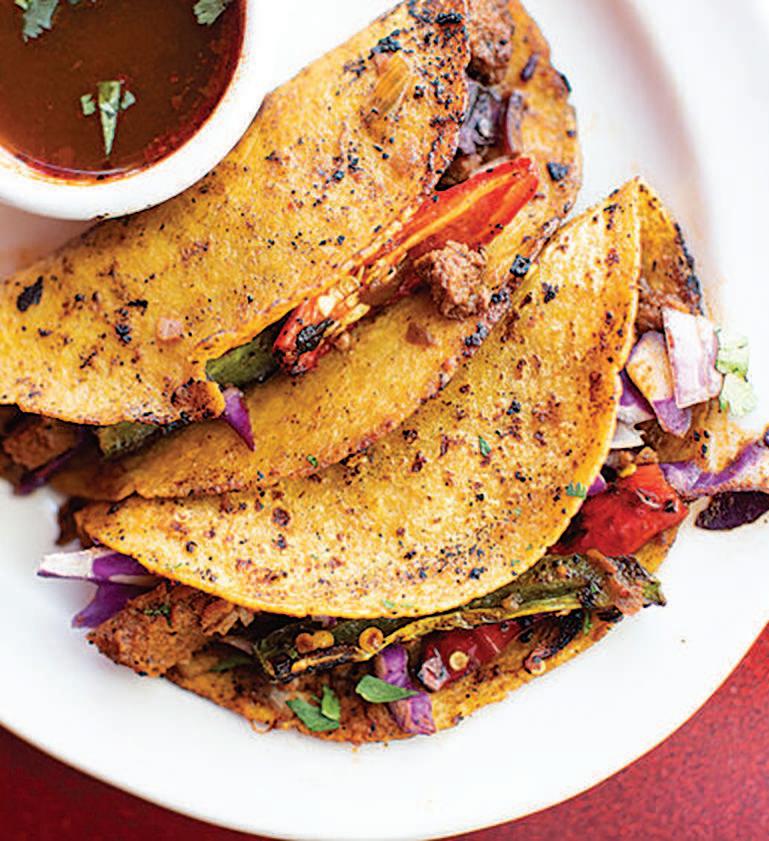

No matter what we’re craving, Seedz always seems to satisfy. The DeMun mainstay has a wide-ranging menu of lunch, dinner and brunch options, and sweet treats, including one of the best chocolate chip cookies in town. If you’re on the go, the smoothie and juice menu has something for everyone. Start with a Rootz Juice and order one of the ever-popular items, such as the ranchero tostada bowl, and settle in.
Like Seedz? Try Lona’s Lil Eats, a vegan-friendly restaurant with healthy eats we’ve been crushing on since we first laid eyes on the rice paper wraps.
6344 S. Rosebury Ave., DeMun, St. Louis, Missouri, 314-725-7333, seedzcafe.com

SweetArt is one of St. Louis’ OG plant-based restaurants, and it just keeps getting better thanks to Reine Keis’ commitment to indulgent lunch, dinner and brunch offerings. Standouts include classics like the Throwback burger, which always manages to hit the spot, and we never leave without one of the snack cakes or Big Momma cinnamon rolls.
Like SweetArt? Try Living Room Coffee + Kitchen, where virtually any dish on the menu can be made vegetarian or vegan.
2203 S. 39th St., Shaw, St. Louis, Missouri, 314-771-4278, sweetartstl.com
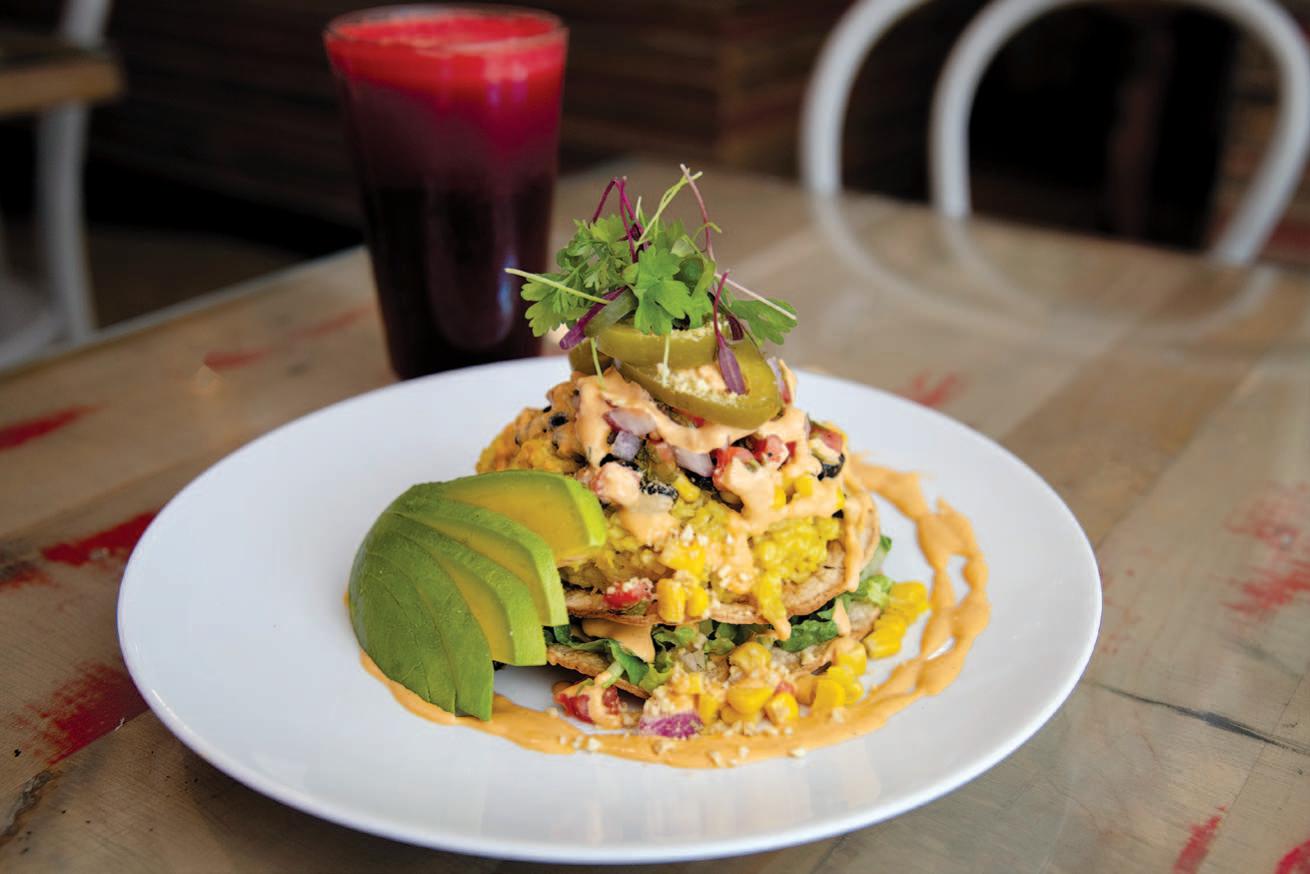
Prioritized Pastries has one of those most playful storefronts around, and the jubilant mix of sweet and savory pastries, personal pizzas and more just reinforces the idea that owner Alex McDonnell is here for fun. Everything here is plant-based, allergy-friendly and spectacular; head in for a personal pizza, a slice of rainbow cake and whatever seasonal pastries McDonnell and her team have been dreaming up.
Like Prioritized Pastries? Try Damn Fine Hand Pies, which has a regular rotation of vegan doughnuts, bread and pastries that are identical to its traditional counterparts.
2719 Sutton Blvd., Maplewood, Missouri, 314-858-0333, prioritizedpastries.com

In 2004 in North St. Louis, a collective of motivated individuals came together, united in their frustration over the lack of quality food in their neighborhood. They pulled together $7,000, bought a third of an acre of land and founded New Roots Urban Farm to fight food apartheid. Now, years later, this grassroots organization has expanded its reach and land, all in pursuit of food justice and serving their community.
New Roots prides itself on creating a different kind of food ecosystem, one based in service and equity instead of profit. The farm sells its produce, which includes carrots, radishes, greens, tomatoes, peppers and more, to people on a pay-as-youcan model. “We let the customers name the price, what they can afford or what they think it’s worth. It’s been really successful,” Antajuan Adams, New Roots’ lead farmer and codirector, says. Adams has developed a passion for animal husbandry and raises rabbits and chickens as well. The organization recently signed a nine-year lease for another 1.65 acres nearby. Adams plans to grow apples, persimmons, chestnuts and paw paws on this land. In addition to food, New Roots collects hygiene and personal care products to distribute for free to people in need. Adams is always on the hunt, frequently asking friends, families and other nonprofits for donations.
Now with years of experience under his belt at New Roots, Adams has witnessed a transformation in the community’s response. “When I first got here 11 years ago, I’d offer neighbors some free kale,” Adams says. People would dismiss his offer, believing kale was only for wealthy folks. “Now I can’t keep enough kale. You really just educate people [on] what it is and how to use it,” he says. He encourages neighbors and visitors to start their own garden, even if it’s just a few herbs or tomato plants.
“I really encourage folks to grow fruits and veggies, not just for nutrition purposes, but because it’s great for mental health.”
This focus on education and empowerment has made New Roots not only a farm, but also a community meeting space. The collective regularly runs free workshops on subjects ranging from animal husbandry and farm bill advocacy to careers in agriculture. New Roots also gathers information and literature for its community members’ use.
“We collect a lot of education from different organizations, things around farm bill policy, food apartheid issues, environmental justice – anything that low-income to moderate-income families can use,” Adams says.
New Roots sees food and environmental justice as irrevocably linked and pursues sustainable farming practices as much as possible.
“A lot of compostable material ends up at landfills, when we could use that materials to really create healthy soil here,” Adams says. The organization has built two compost bins so neighbors can drop off grass clipping, organic food waste and more. “It encourages people to compost more when it’s closer to them.”
Adams occasionally gets pushback from his friends or neighbors about his job and his encouragement for Black people to farm and develop gardens. “Sometimes I have conversations with Black people like myself. People feel like I don’t have freedom. But I tell people I’m as free as I’ve ever been in my life,” he says. “I can create food, which is my currency. I can sell it. I can trade it … I really want to express to folks that farming doesn’t mean you’re a slave. We built this country off our hands, but I’m free.”
New Roots Urban Farm, 1832 Hogan St., St. Louis, Missouri, newrootsurbanfarm.com

›Last year, New Roots Urban Farm grew 5,000 pounds of food, serving over 200 families.

›New Roots hosts volunteer days every Tuesday and Saturday from 12 to 6 p.m., no experience required.
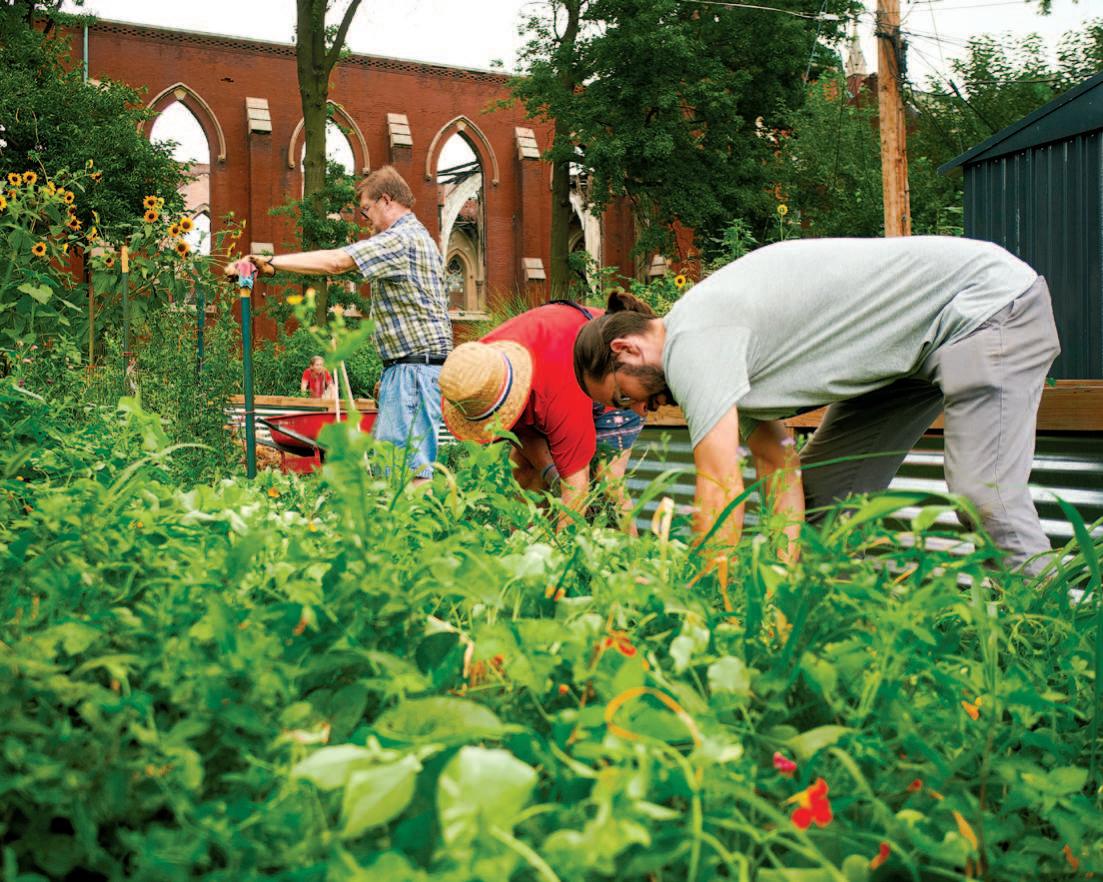


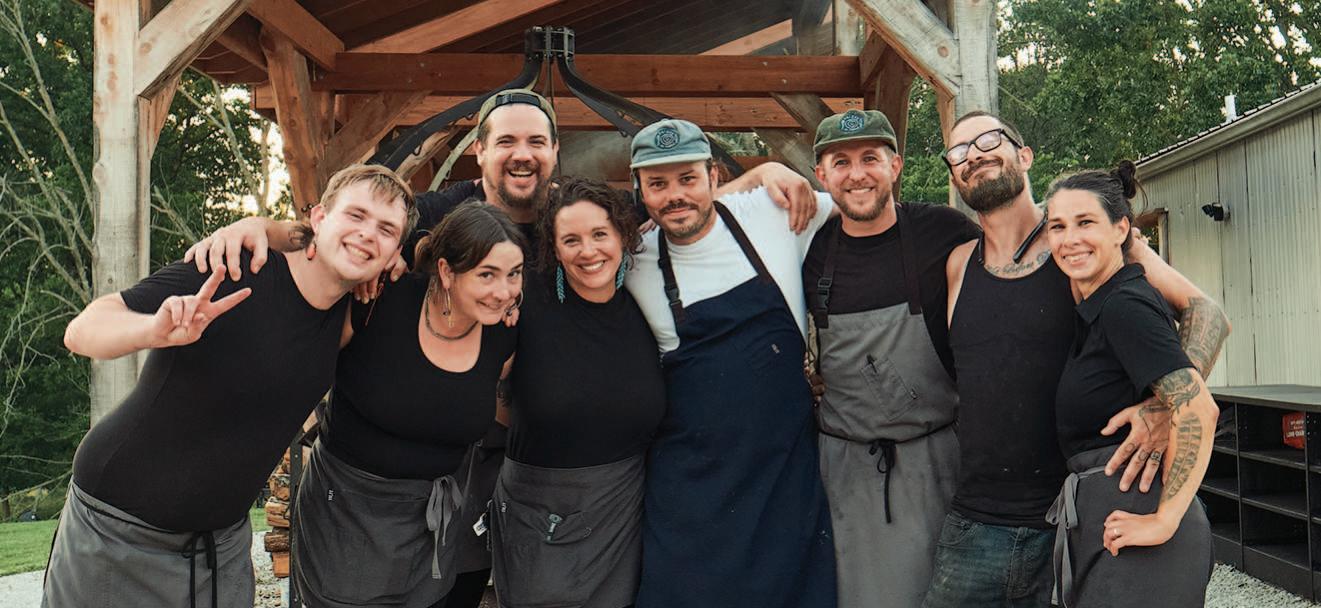
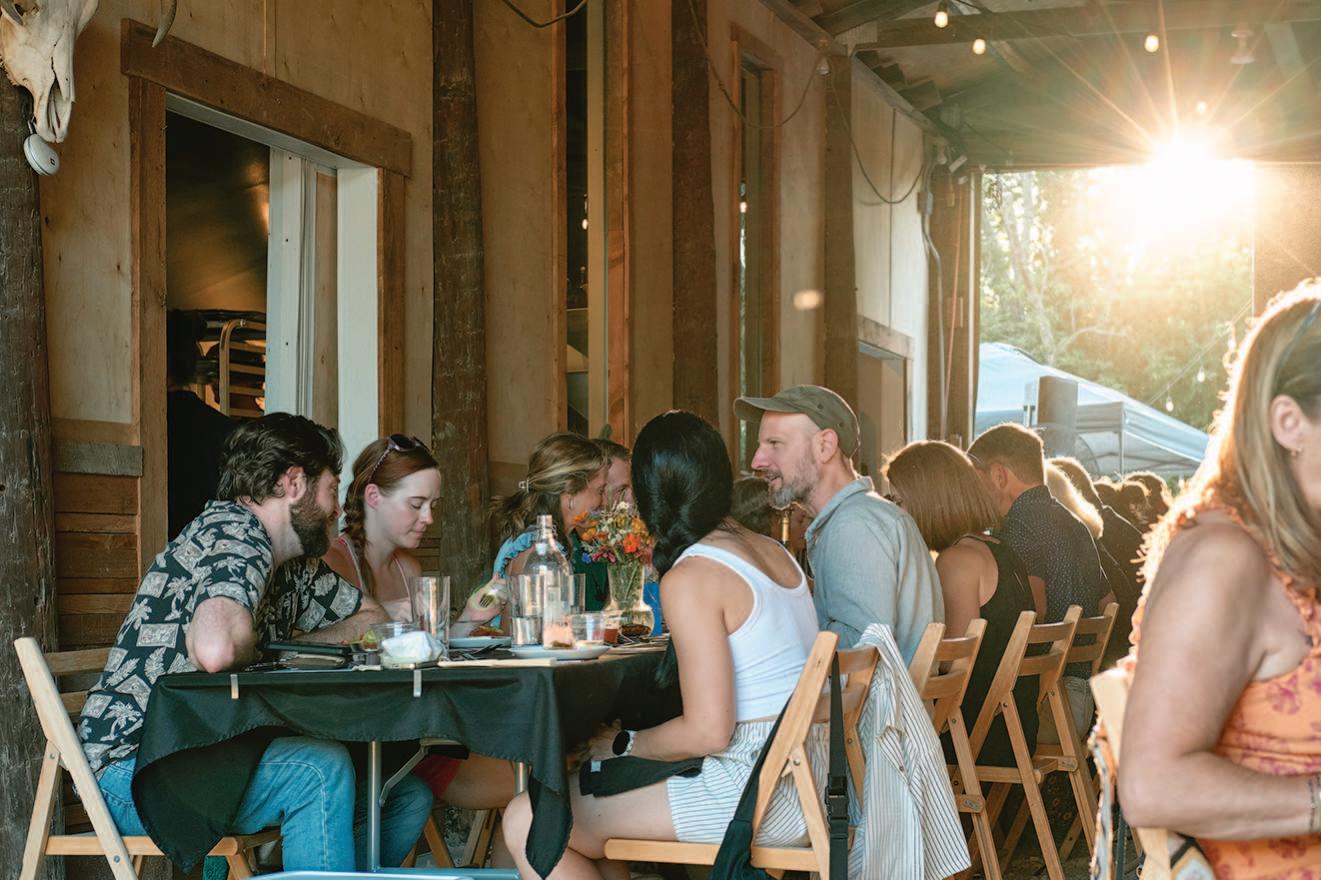

From balconies to beer gardens, al fresco dining is everywhere; meet the chefs who are bringing a welcome breath of fresh air to fine dining.
Outdoor dining has always been popular in St. Louis, with patios filling up at the first sight of spring and persisting until even the patio heaters can’t keep up with the cold. Recently, dedicated fine dining destinations have popped up outdoors as a new way to experience high-end cuisine and curated tasting menus in a different context. The definition of fine dining has evolved into something markedly less stiff, with new rules (or no rules), and chefs are using outdoor dinner experiences to strengthen the bond with diners, giving them a new perspective on the importance of seasonal cuisine.
Spearheading this new wave of open-air dining is Farm Spirit, which hosts a rolling dinner series at Such & Such Farm, a 120-acre farmstead in DeSoto, Missouri. Founded just a few short years ago during the pandemic, the passion project from owners and partners Ryan McDonald and Ashley Batiste has exploded into a finely honed operation. What was once a few Weber kettles is now an outdoor kitchen, a full staff and its own moniker: Homie Hospitality, the side of the business that handles dinners and events throughout the year. “We started this project in a time when it was needed the most and before there was a huge expanse of pop-ups in the area, which is pretty cool,” McDonald says. “Being able to bring folks out and connect them with the farm is a special thing; it’s not often you get to enjoy a dining experience 100 feet from the source."
Just as unusual is the idea of communal dining, with over 100 guests seated at long tables that line the barn that overlooks expansive rolling fields and farm animals. Strangers often become friends amid the string lights and
farm-harvested flowers that warm the space. “The DIY elements and natural beauty of the farm add a special element that can’t be replicated elsewhere,” Batiste says. “The feeling of working really hard toward something and welcoming others in to enjoy the fruits of our labor is deeply meaningful.”
One of the most unique features of a Farm Spirit dinner is the menu. Typically a tasting menu, it's driven by seasonal produce and created in collaboration with guest chefs or for more casual events like pig roasts or late fall markets. Harvests guide the menu, with responsibly sourced meats and items the staff has processed from scratch falling in line behind to create a meal guests can see all around them. “Seasonal menus require a level of trust from our diners,” Batiste says, adding that a hyper-seasonal menu based on what’s available a few days out from each event means recipe development happens at a more accelerated pace than in traditional restaurant settings. Thanks to vast collective experience and a fluidity of movement, the Farm Spirit team can create what Batiste calls “intangible magic” with ever-changing menus that delight.

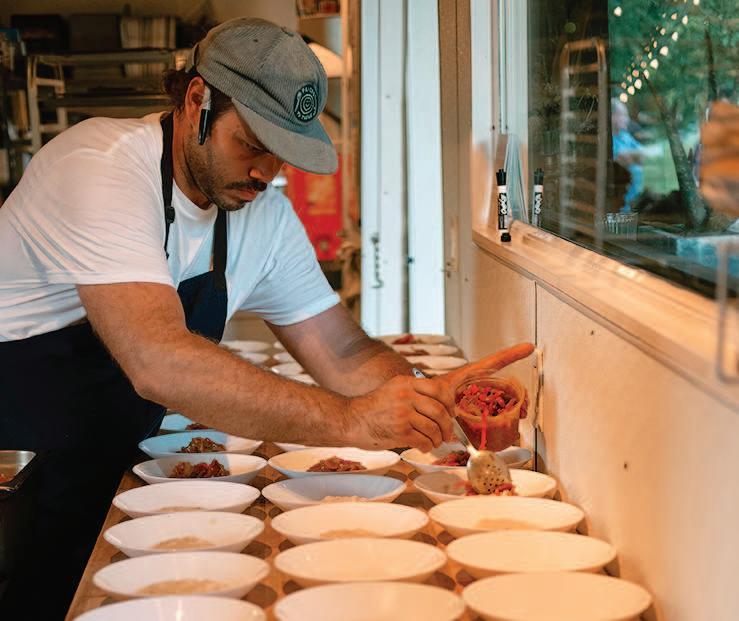
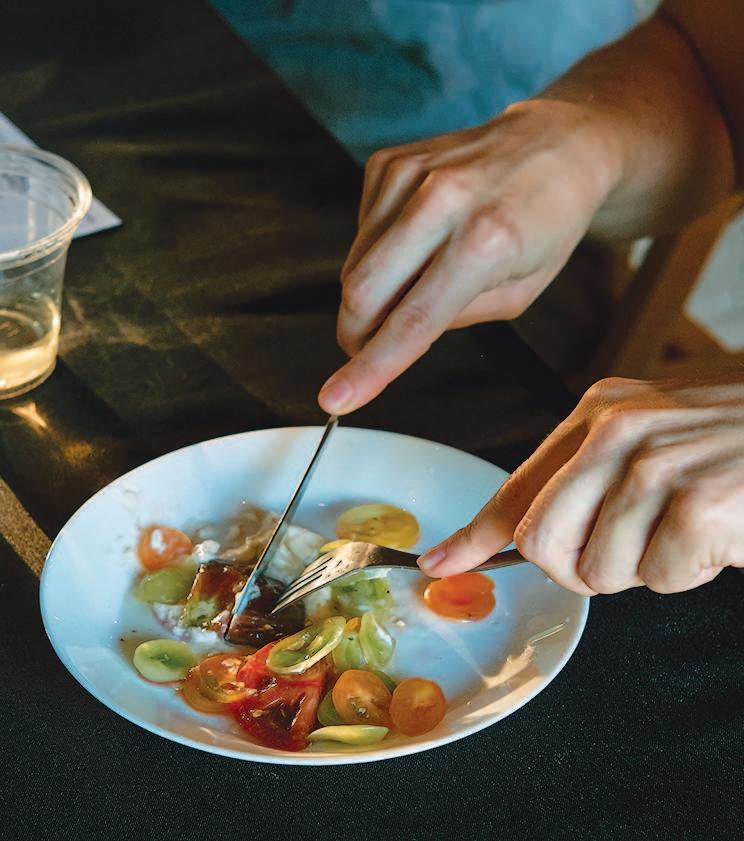
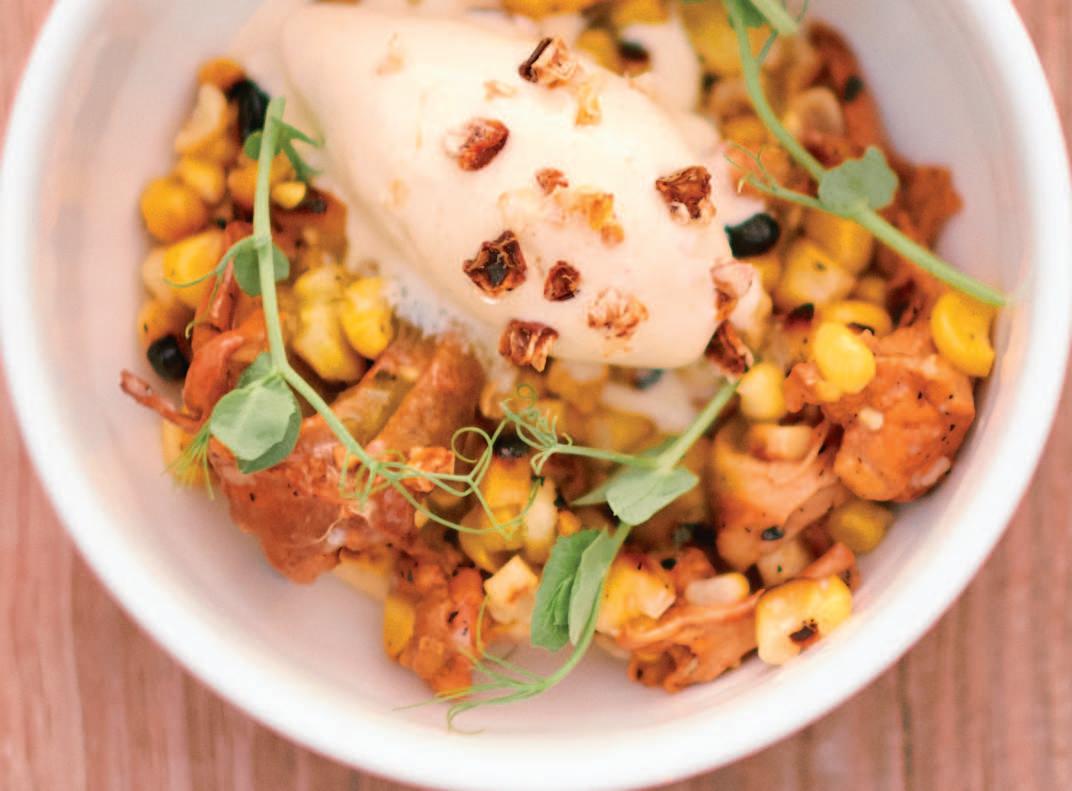


The outdoors is a crucial element to the experience; dining outside just feels good if the weather is right.
– MATT DUFFIN
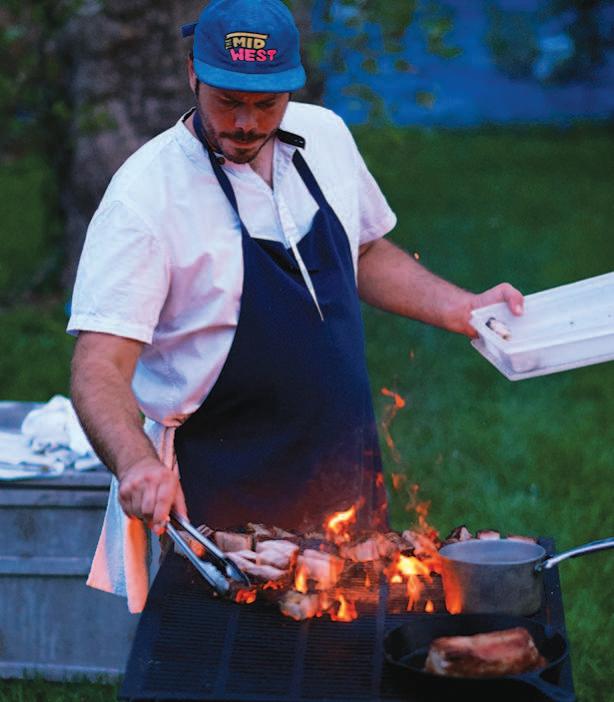
An extension of Farm Spirit’s operation has been the emergence of Full Thyme Farms, an intimate private dinner series and community gardening effort from the mind of Matt Duffin. A core member of the Farm Spirit team with over 25 years of experience in the restaurant industry, Duffin uses his property as a home base for a weekend dining series a few nights a month. The series is brought to life by a rotating cast of outstanding chefs who collaborate on tasting menus that are often personal in nature, with explorations into culture, personal heritage and regional foodways.
Although dinner is served inside, the outdoors is heavily woven into elements throughout the meal. Welcome bites are often served outside on a beautiful back patio overlooking the grounds.
“The outdoors is a crucial element to the experience; dining outside just feels good if the weather is right,” Duffin says. “We encourage guests to walk around the backyard where we have a woodfire grill going, a work-in-progress garden and a big deck for lounging while waiting for other guests to arrive.”
The energy from the night flows in multiple directions. The intimate setting gives guests a chance to chat with ease, while chefs get a chance to interact in a way they would not behind the walls of a restaurant kitchen. After dinner, the staff takes an hour to talk with diners and get to know them on a more personal level.
“That’s something that’s nearly impossible for a chef to do in a restaurant,” Duffin says. “Our focus is to make people feel welcome, so we build friendships and relationships.”

S D N N E Y
A R L I

Written by Emily Standlee | Photos by Christina Kling-Garrett
Not all infused foods are created equal, especially in an ever-evolving and expanding cannabis industry. For Brown Paper Sack Co. founder Sydney Carlin, that means developing high-quality infused products that rise above the rest. “Brown Paper Sack Co. started about four years ago when I quickly realized how inconsistent edibles seemed to be all across the board,” Carlin says. “I knew I had the knowledge to change this with my own products.” From her signature gummies, delightful cheese crackers and infused lemonades and coffee drinks, taste and attention to detail go hand in hand. Carlin also says the creation process is a dream realized – that helping people is high on her list of reasons to do what she does. “I want to have a product for everyone’s needs, no matter the ailment or issue,” she explains. Read on to see how Carlin balances her foodie sensibilities with extensive cannabis knowledge, and discover what future treats she plans to infuse.
What inspires your products and flavors?
My flavors and recipes come from wanting to have something for everyone: candies like gummies, Krispy treats and muffins for the [folks] with a sweet tooth; salty items like Weed-Itz, goldfish and crackers for the savory lovers; and THC pills and tinctures for the ones who prefer to not taste or eat anything. Tinctures can also be used topically instead of orally on any joints or sore muscles one might have! My main goal is to find a perfect product for every single person interested in cannabis edibles. I am simply inspired by the idea of helping others and will happily customize what I do to ensure all needs are met.
In addition to crafting your own items, you collaborate with chefs on infused dinners. What’s that experience like?
Not only do I have my own edible line, but I also work as “The Infuser” for THC-infused dinners. I have a huge passion for edibles and everything that plays into that, but I’m also a huge foodie. Being able to pair with a chef and put those two things together to create an experience for others is something that makes me so happy and emotional all at the same time. The chef provides the actual food part of the meal, and I come along with the “secret ingredient” to ensure everyone consumes an enjoyable amount for their personal needs.

A fan favorite, so naturally it’s also a favorite of mine! Seriously, who doesn’t love a [cheddar cracker]? It’s so nice to buy something you already know you like.
What’s on the horizon for Brown Paper Sack Co.?
We recently introduced new items such as lemonades, lattes and Americanos [and are working on] a new healthy granola line. We also plan on doing as many infused threeor four-course dinners as we can handle. We are also in the works on an infusing class that will come with a cookbook featuring my top 20 favorite edible recipes. We will never stop trying to do better and always strive to keep learning about our customers.
Brown Paper Sack Co., instagram.com/brownpapersackco
These are my most favorite edible candies to create. Some of my most popular flavors are watermelon, blue raspberry and green apple.
Infused lemonades and lattes are a newer item made-to-order from us. They are available in singles and six-packs and can be fully customized on strength for each customer. We have vegan-friendly options for both as well. The lemonades come in blue raspberry, strawberry and regular, and the lattes come in vanilla, mocha, brown sugar cinnamon and plain. For the lattes, you can also choose your milk preference.
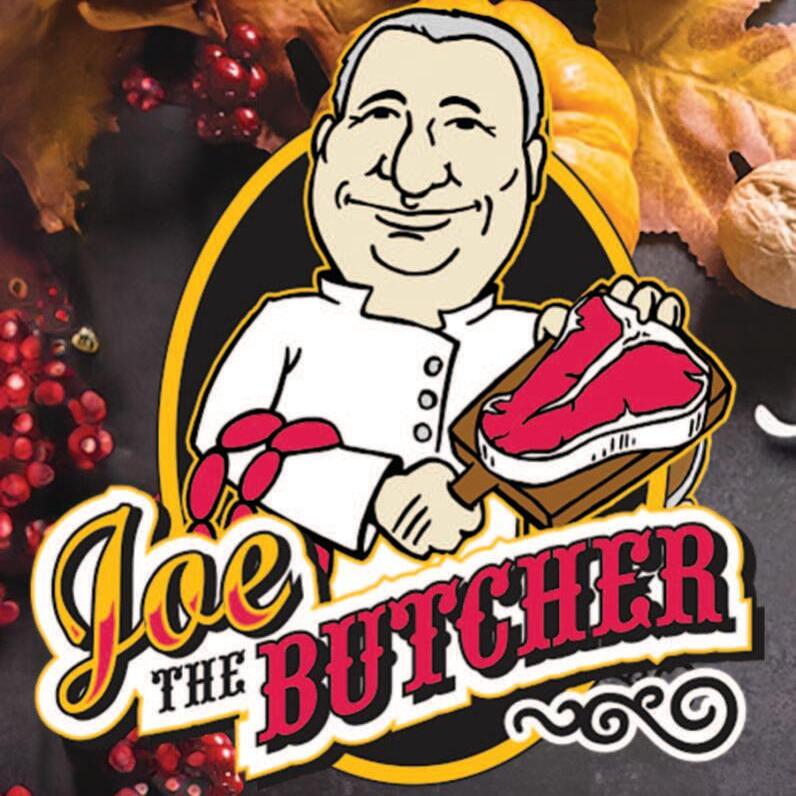













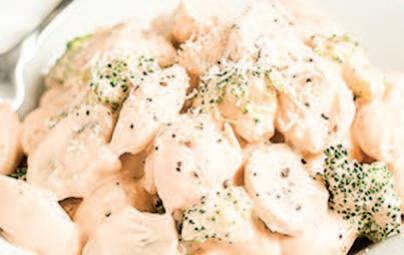
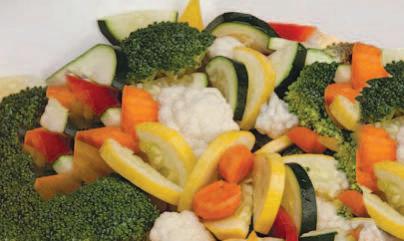
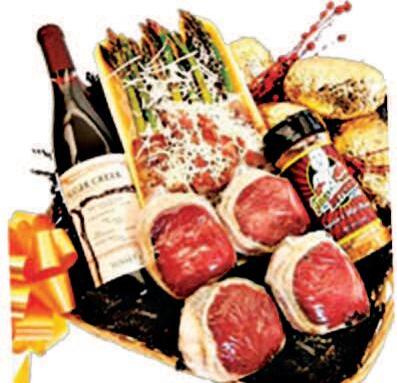
FOR THE SEARED VEGETABLES
½ cupcanolaoravocadooil(usedtocoatpan)
1 smallheadbroccoli,cutintoflorets
1 mediumdelicatasquash,cutinhalf lengthwise,seededandcutinto¼-to ½-inchthickhalf-moons
1-2 tablespoonsshiitakemushroomsoysauce Saltandpepper,totaste
FOR THE KIMCHI-ALMOND BUTTER DRESSING
4 tablespoonskimchijuice(theliquid fromajarofkimchi)
4 tablespoonsblanchedalmondbutter 1 tablespoonapplecidervinegaror ricevinegar
1 teaspoonhoney
2-3 tablespoonsoliveoil
1 teaspoonshiitakemushroomsoysauce Saltandpepper,totaste
FOR SERVING
Cookedbrownrice,quinoaorothergrain ¼ cupkimchi,drainedandchopped ¼ cupalmonds,toastedandroughlychopped ¼ cupmicrogreens(daikonradish,redradish,arugula, orcilantro)
[ preparation - Seared Vegetables ]
Heat a large cast iron skillet over medium-high heat. Coat the bottom of the skillet with a thin layer of canola oil and heat until the oil is shimmering. Add the broccoli florets (and stem pieces, if separated) to the pan in a single layer and cook for 5 minutes, until charred on the bottom. Flip, cover the pan with a lid (or sheet pan if your pan doesn’t have a fitted lid), and cook for another 3 to 4 minutes, until the broccoli is charred on the other side and bright green in the middle. The florets should still be slightly crisp in the middle, not completely softened. Add the shiitake mushroom soy sauce to the pan and toss to let the broccoli absorb it, adding more if needed to reach your desired saltiness level. Remove from the pan when the liquid has evaporated and set aside.

Repeat the searing process with the delicata squash slices. Coat the bottom of the skillet with a thin layer of canola oil, arrange the delicata slices in a single layer, and cook for 5 minutes until well-browned on the bottom. Flip, cover the pan, and cook for another 3 to 4 minutes, until just barely tender. Season to taste with salt and pepper. If your delicata slices are on the thicker side and getting tender in the pan after flipping, you can transfer the skillet to a 400°F oven and roast for 5-10 minutes, until cooked through.
[ preparation - Kimchi-Almond Butter Dressing ]
Whisk kimchi juice, almond butter, vinegar, honey, olive oil and soy sauce together in a medium bowl until smooth; use more olive oil to thin dressing to desired consistency. Season to taste with salt and pepper and set aside until ready to use.
[ To Serve ]
Arrange the vegetables on a serving platter on a bed of prepared grain; drizzle with Kimchi-Almond Butter Dressing. Top with chopped kimchi, microgreens and almonds. Serve immediately.
AND ROSEMARY CARAMELIZED APPLES
• Apples and apple cider – Ringhausen Orchards, Friedel Family Farm
• Rosemary – Bee Simple, Dang Good Produce
• Ice Cream – Bold Spoon Creamery Ice Cream
• Granola – Louise’s Granola (original flavor)
SEARED VEGETABLES WITH KIMCHI-ALMOND BUTTER DRESSING
• Broccoli and delicata squash – Double Star Farms, Dang Good Produce, Biver Farm, Buila Farm
• Shiitake mushroom soy sauce – Ozark Forest Mushrooms
• Kimchi – Cozy Cabbage original flavor
• Blanched almond butter – Herb ‘n’ Pepper
• Honey – Robins Apiaries, Bee Simple, Brickhouse Bees at Larder & Cupboard
• Microgreens – Bee Simple
Fennel Cooking Studio, 3043 Olive St., Midtown, St. Louis, Missouri, fennelstl.com

Written by Emily Standlee | Photos by Christina Kling-Garrett
There’s no denying the fact that St. Louis farmers markets add to the cultural fabric of our city. They not only grant access to prized seasonal produce like lobster mushrooms and watermelon radishes, but they also give chefs from around the globe a chance to introduce us to their flavors. Such is true for Tee Rak chef-owner Alada Poodtajan, whose stall you can spot at farmers markets around the city. And no one is more excited to share those flavors than Poodtajan, who says she couldn’t find the Thai food she’d been craving since moving to the States and decided to make her own. “I told my husband I wanted to make Thai food the right way, so people here could taste the real thing,” Poodtajan explains. “At first, we planned to have a food truck and eventually a restaurant, but our friend Suzy – who worked with us at the International Institute – suggested farmers markets because it would cost much less to start.” Poodtajan and her husband applied and were accepted, starting first at Tower Grove Farmers Market Tuesday evening market and the Sunday Boulevard Market in Brentwood. Now, after cutting their teeth at festivals throughout the city, you can find the Tee Rak team at TGFM and University City farmers market. Read on to see how Poodtajan finds inspiration among family and farmers and learn which Tee Rak dishes she recommends you try.
Do you get to go back to Thailand very much? What are you inspired by there?
I just went back home in February for the first time since moving here in 2020 to see family and become certified as a Thai chef. My mom has always been my inspiration. My parents are poor farmers, and growing up, we never ate out. Everything was fresh and cooked at home. When I went home this time, I would go with my mom to the fresh market in the village and pick out vegetables and fish and meat for meals, and my mom would brag about me to the women from the village. I like collaborating with farmers at the markets because it makes me think of my mom.
What should newcomers to northern Thai cuisine know about it?
North food has its own flavors and character. It’s not as spicy as food from Bangkok or southern Thailand, but some of the most delicious you’ll ever eat: Khao Soi, Ghaeng Hunglay and the sausage Sai Oua are from the North. If you haven’t tried these, I highly recommend them.
What’s on the horizon for Tee Rak?
Our original plan was a food truck and eventually a restaurant, but we’ve had such great success with our farmers market stand that we’re looking at spaces for a brick-and-mortar. We have our eyes on some spaces – mostly in the Shaw or Tower Grove area because it’s such a great, diverse spot. Right now, we’re looking for the right place, the right company to rent from, or, with a couple spots we really love, a buyer for the property we can work with to create my restaurant dream. The farmers market season is keeping me and my husband very busy, but we’d also like to maybe do a pop-up in Tee Rak, teerakthai.com
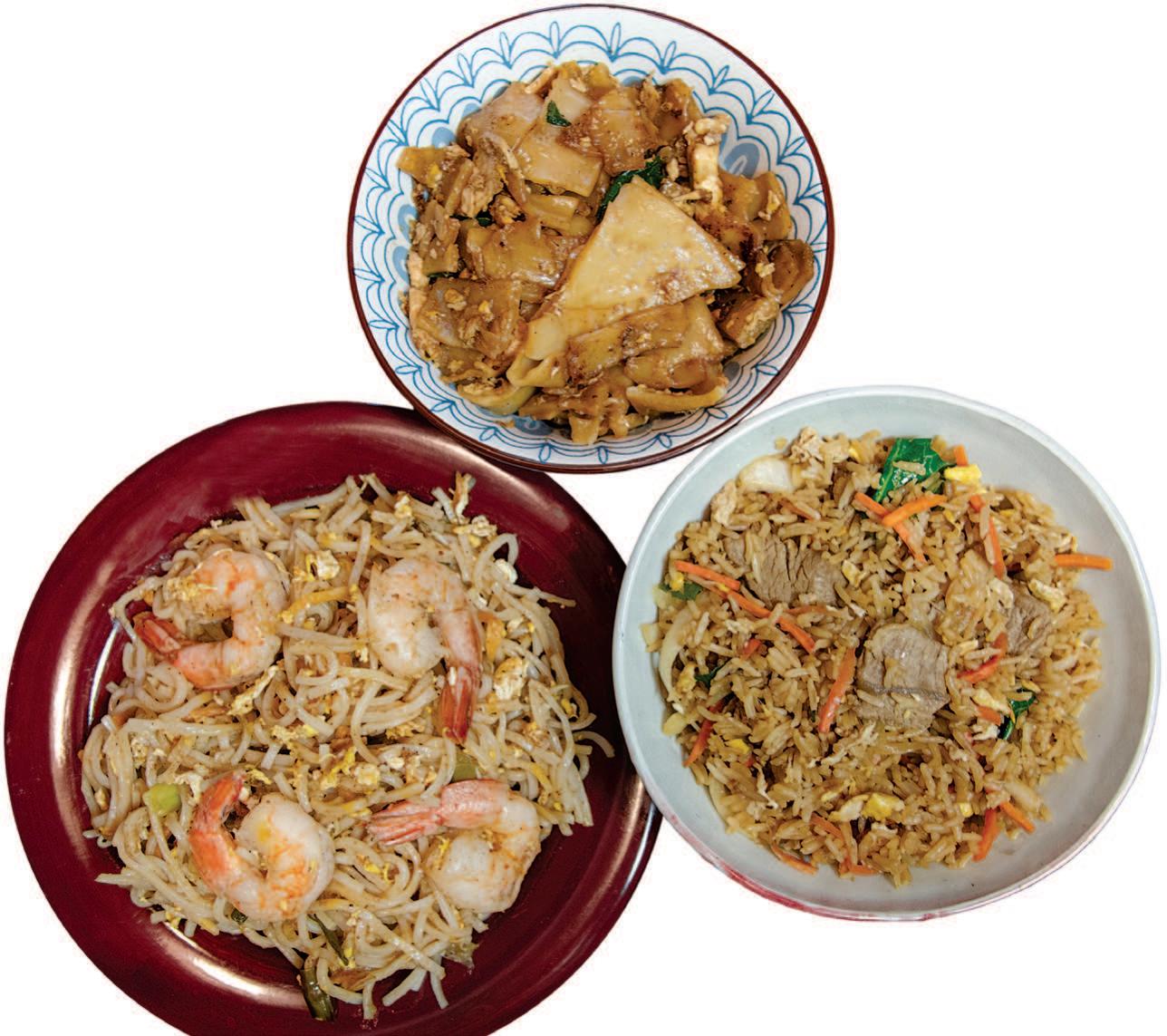
Written by Rebecca Davis
Photos by Christina Kling-Garrett
Andy Fair knows a thing or two about the best restaurants in St. Louis, and he should – he’s worked at many of them. Starting at Imo’s and making his way through Bar Italia, Maggiano’s, Urban Chestnut Brewing Co., Union Loafers and more, it’s safe to say the seasoned restaurateur truly appreciates the city’s culinary landscape. Now, he’s moving his extensive experience and passion in a new direction as the proud co-owner of The Gelateria Coffee Co., where he’s preserving the charm of one of St. Louis’ most beloved institutions while expanding the menu in all directions.
Fair initiated a kitchen remodel to accommodate a menu rich with fromscratch bread and high-quality seasonal


ingredients. The brioche and focaccia, more akin to a Tuscan schiacciata, are crafted in-house using a time-honored recipe. Soon enough, Fair introduced pizza to the menu, using a recipe he’s been perfecting for over a decade. “Once I figured out how to make dough [in undergraduate school], I started having pizza parties where I would just make a bunch of dough, invite people over and make pizzas for them,” he says. Fair brought that knowledge to Urban Chestnut years later and continues to apply it today at Gelateria. Customers can enjoy a rotating selection of pizza on Friday and Saturday nights from 5 p.m. to close, with plans underway to offer it full-time.
As the cold season approaches, Fair looks for warm, hearty selections around town when things get colder, gravitating toward a favorite at O’Connell’s Pub. “The [roast] beef sandwich is such a sleeper,” he says. “It’s one of those sandwiches that you kind of have to wrestle with; you have to like, really work at it to get a bite. I always felt like I should be eating it, smoking a cigar and drinking Scotch at the same time.”
To order one like Fair, nix the au jus, add spicy mustard and horseradish, and make sure your meat is cooked rare. For family
The egg sandwich on housemade brioche with ham. Simple, timeless and an OG menu item for a reason.
The mortadella sandwich on Gelateria’s famous scratchmade focaccia with ricotta and pistachio butter.
The seasonal salad, which features a rotating bounty of fresh, locally sourced ingredients.
outings, he enjoys taking the gang to Pastaria for pizza of any variety. “I can take the kids there, we can all eat, and everyone will be happy,” he adds. “I have so much respect for Gerard Craft; his restaurants have been consistently excellent and they’re always in my top favorites.”
The Gelateria Coffee Co., 3197 S. Grand Blvd., Tower Grove South, St. Louis, Missouri, 314-776-3500, thegelateria.com
Written by Emily Standlee | Photo by Jennifer Silverberg
St. Louis is a city of go-getters and community gatherers, and Darcy Heine, owner of Fiddlehead Fern Café, epitomizes both. With a background in photography, restaurant management and coffee roasting, Heine brought her diverse skillset and deep love for the Shaw neighborhood together when she opened Fiddlehead in 2017.
We posed a series of rapid-fire questions to Heine about her business, perspective and personal tastes. Read on to learn more about her.
You grew up in the Shaw neighborhood. How would you describe it in three words?
Reawakened. Supportive. Lively.
Anybody in the food scene here who you’d love to collaborate with?
I’ve wanted to do our Moon Goddess ube tea latte as a boba tea with Franklin [Killian] from Boba B!tch.
What’s your favorite STL restaurant of all time?
The Vine on South Grand.
Favorite film?
The 1989 cult classic, “The ‘Burbs,” with Tom Hanks and Carrie Fisher.
What does a day off look like for you?
Taking our dogs on a hike and trying to choose between Bowood, Songbird or Union Loafers for lunch.
What bar would you take an out-of-town friend to?
The Lucky Accomplice in Fox Park.
Do you have a favorite menu item at Fiddlehead?
The Pompeia Salad – our vegan Caesar salad named after a wife of Julius Caesar – and our lavender-lime espresso tonic to drink. We’ve had both on our menu for so many years, and they’re just so good.
What three picnic foods/drinks would you bring to the park?
Chips and dip, popsicles and Prosecco.
What’s one thing coffee drinkers should look for when buying beans?
Always look for whole bean coffee with a roast date of within a few weeks. This is why I always recommend buying beans from local coffee shops. Grocery stores tend to keep their inventory for a long time. And if you don’t have a grinder, a knowledgeable barista can ask you a few questions about how you prepare your coffee at home and then grind the beans for you to the right grind size.




